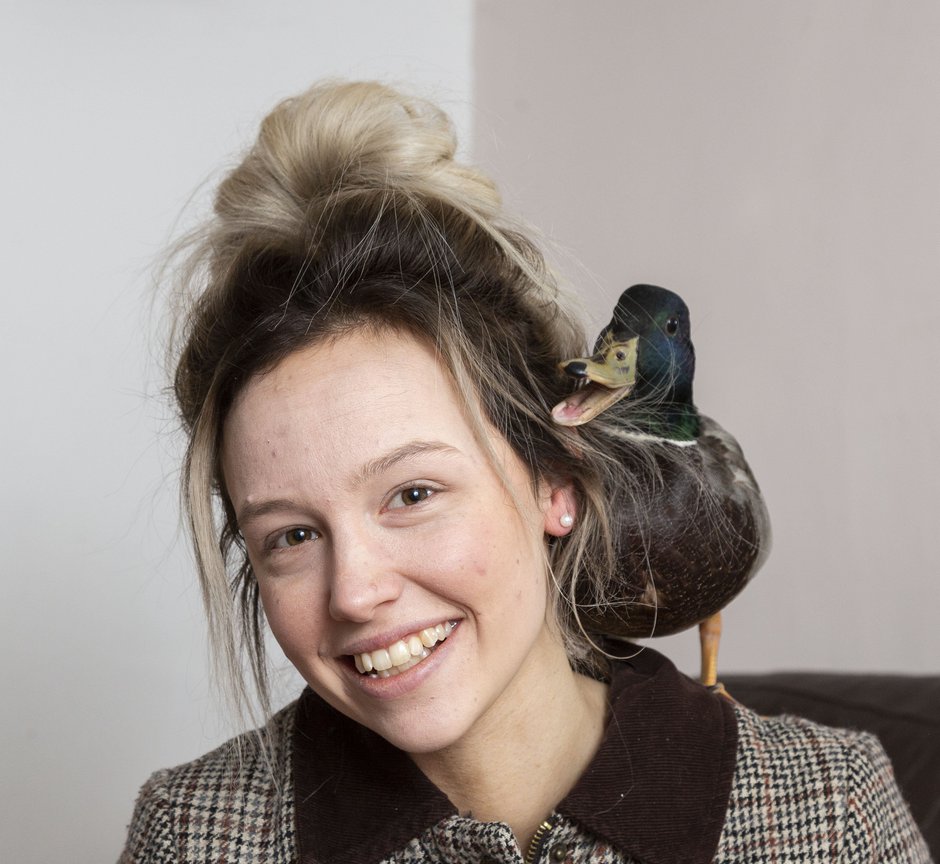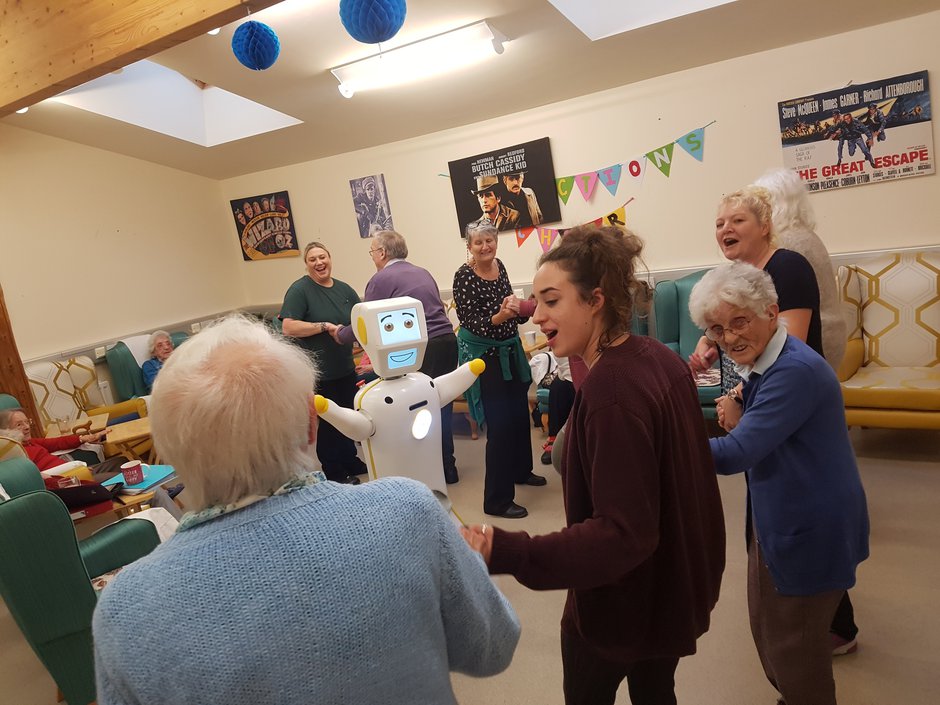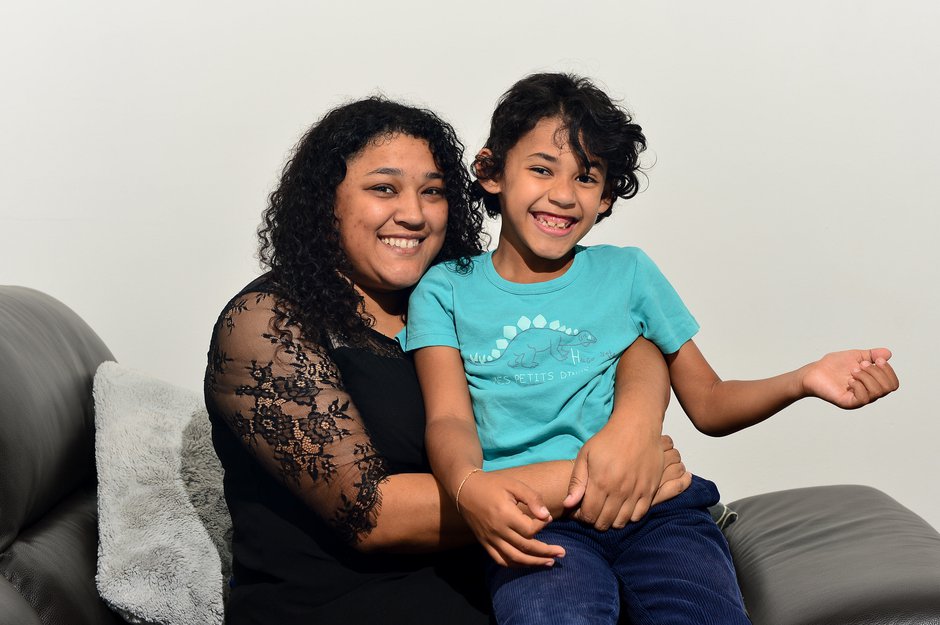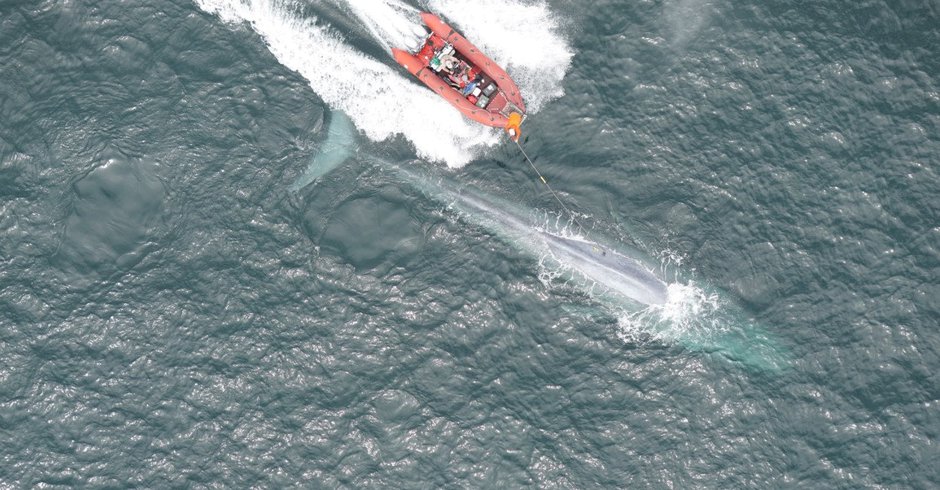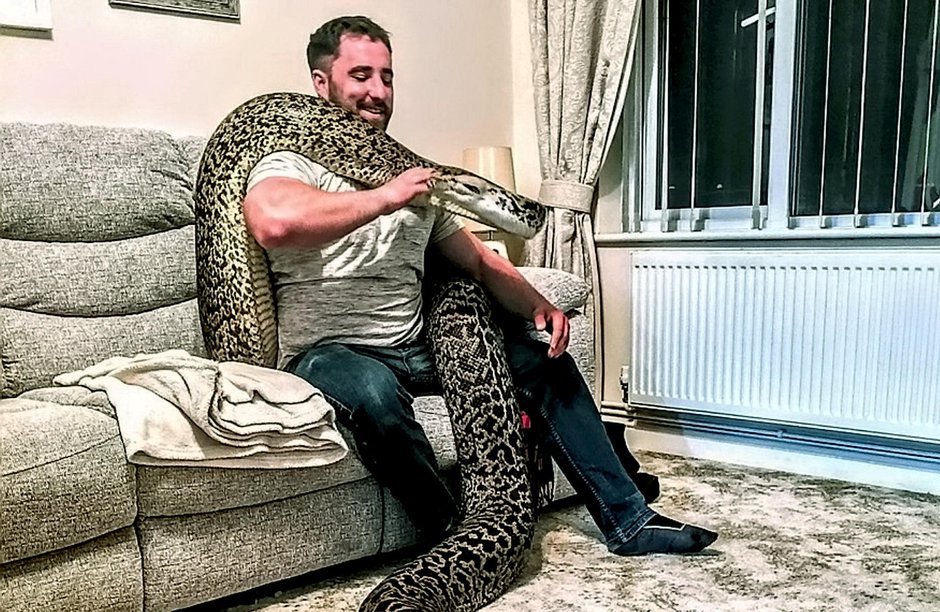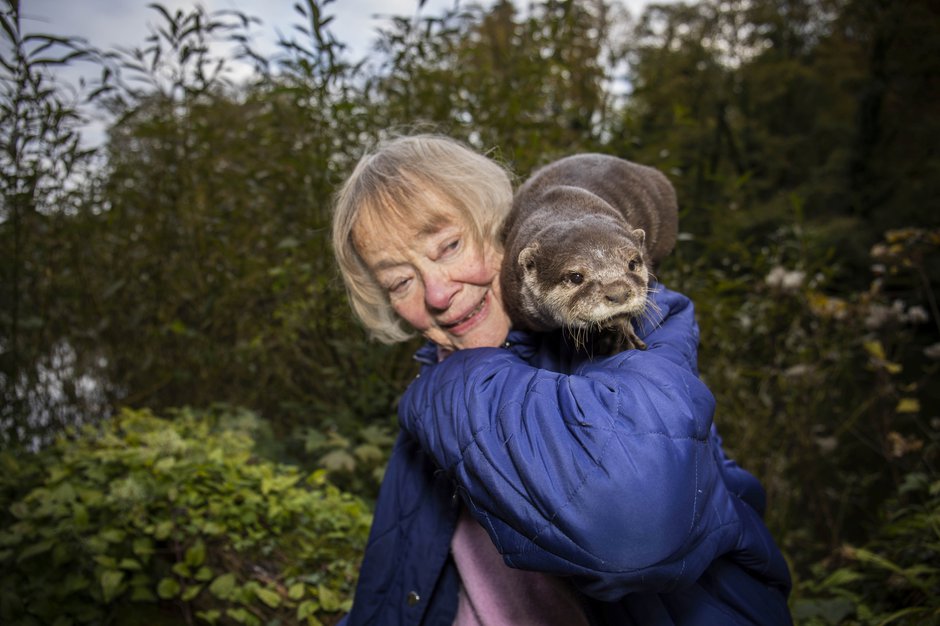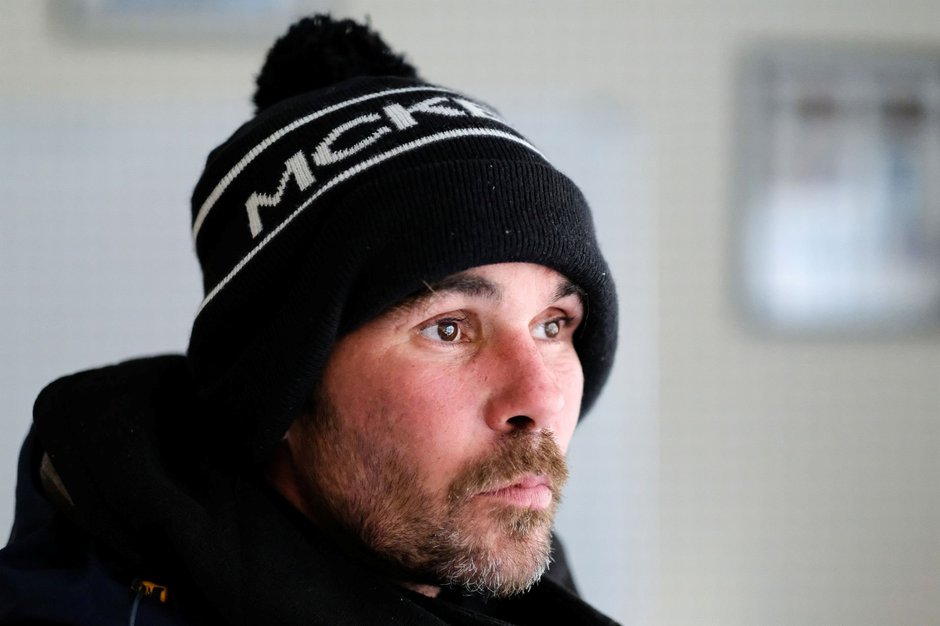Meet Denzel the house duck - a lost and lonely duckling hand-reared by a cleaner who brought him in from the rain
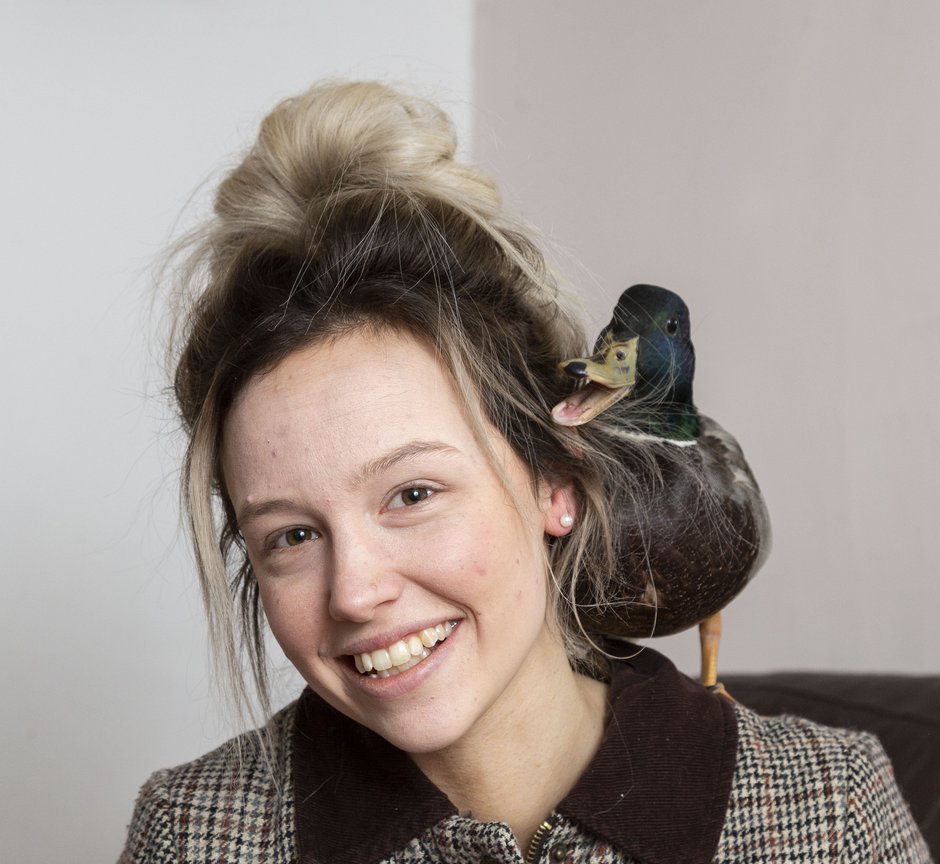 Image by: Lee Mclean SWNS
Image by: Lee Mclean SWNS
A kind womans adopted a lost duckling which turned up on her front doorstep in a rain storm - and now it barely leaves her side.
Jessica Clewes, 24, hand-reared Denzel the duck after her dad Michael Clewes, 70, opened his front door when he heard chirping outside.
She nursed the tiny shivering bird back to health - warming him up under a heat lamp and feeding him worms.
But when he was big enough to fly the nest, pampered Denzel didn't want to leave, so she built him a duck pond and outdoor house, but he prefers to be indoors.
Four months since he waddled into their lives, Denzel loves watching TV from his favourite spot in front of the fire.
He follows Jessica and partner, Adam Oliver, 38, around the house in Smallwood, Cheshire, and even sits on their shoulders and nestles into her hair.
Cleaner Jessica, who has experience as a game keeper, said: "We love him to bits. He sees us as parents and we have hand-reared him since he was a baby.
"He sits on my knee at night whilst I watch TV and now it’s cold outside he likes to sit in front of the log burner.
“He’s never ever tried to fly away and he could do at any point really, but this is all he has ever known.
“I’m not sure he would survive in the wild now. I’m not even sure he knows how to be a proper duck.
“He must have only been a couple of days own when he turned up on my dad’s door in the rain.
“I want to keep him forever now. We both have an affection for him.
“He must be happy otherwise he would just fly off. He could do if he wanted to but has never even tried.
"'Gamekeepers, farmers and country people aren't all about killing animals. We are all massive conservationists too."
Denzel, a mallard drake, showed up at Jessica’s dad’s front door during a rainy day in the middle of July.
Former game-keeper, Michael Clewes, 70, opened the door to bring him inside and gave him some TLC.
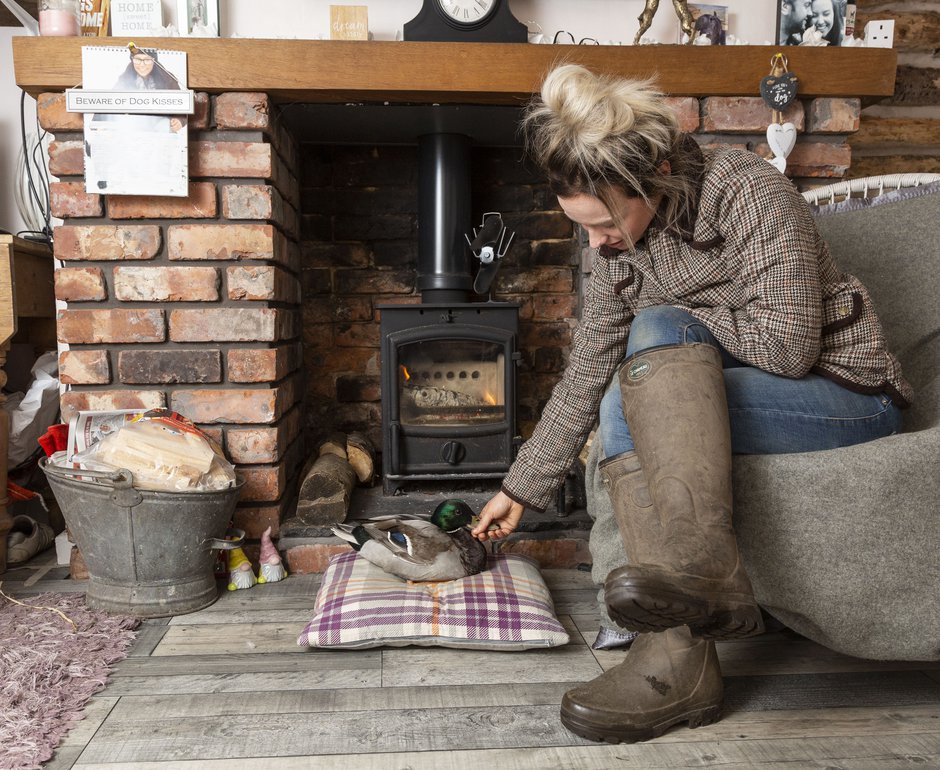 Image by: Lee Mclean SWNS
Image by: Lee Mclean SWNS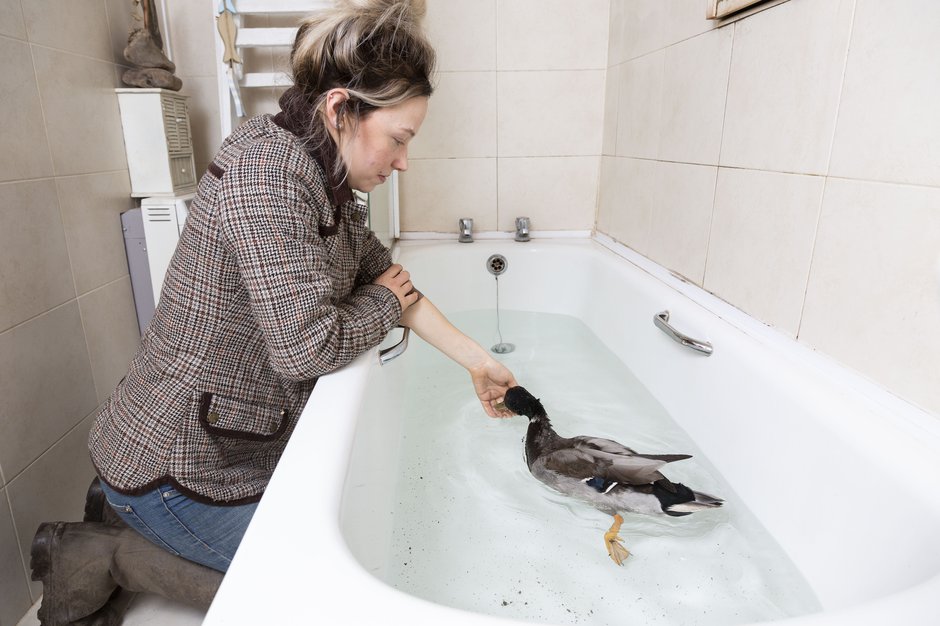 Image by: Lee Mclean SWNS
Image by: Lee Mclean SWNS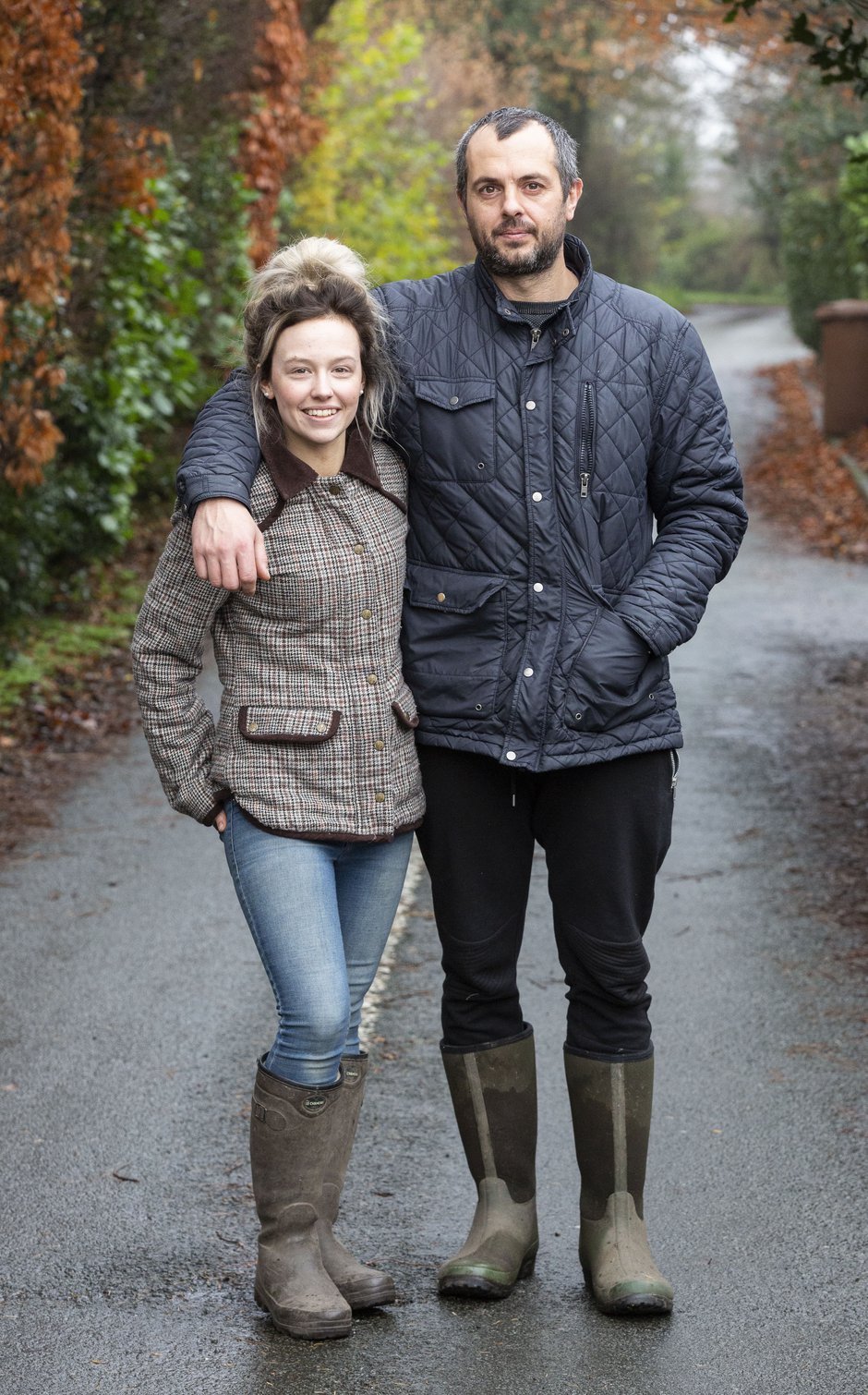 Image by: Lee Mclean SWNS
Image by: Lee Mclean SWNS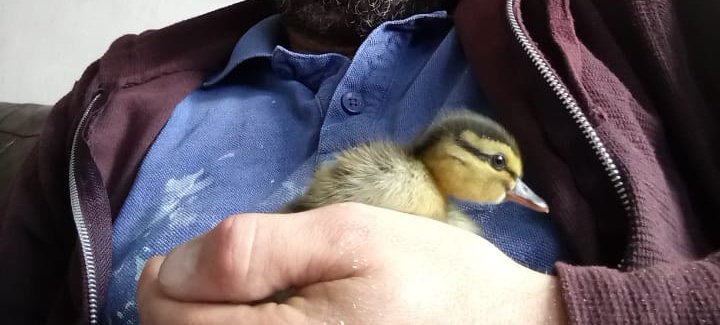 Image by: Jessica Clewes
Image by: Jessica Clewes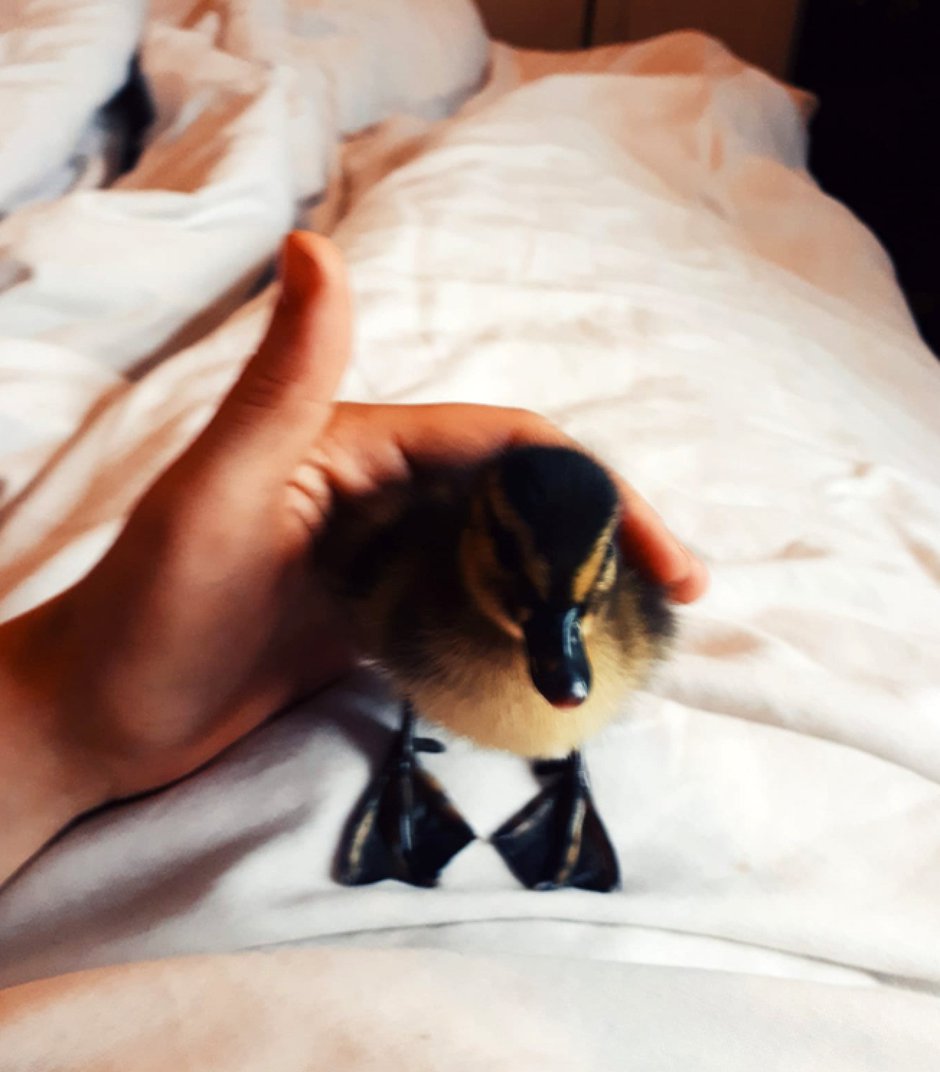 Image by: Jessica Clewes
Image by: Jessica Clewes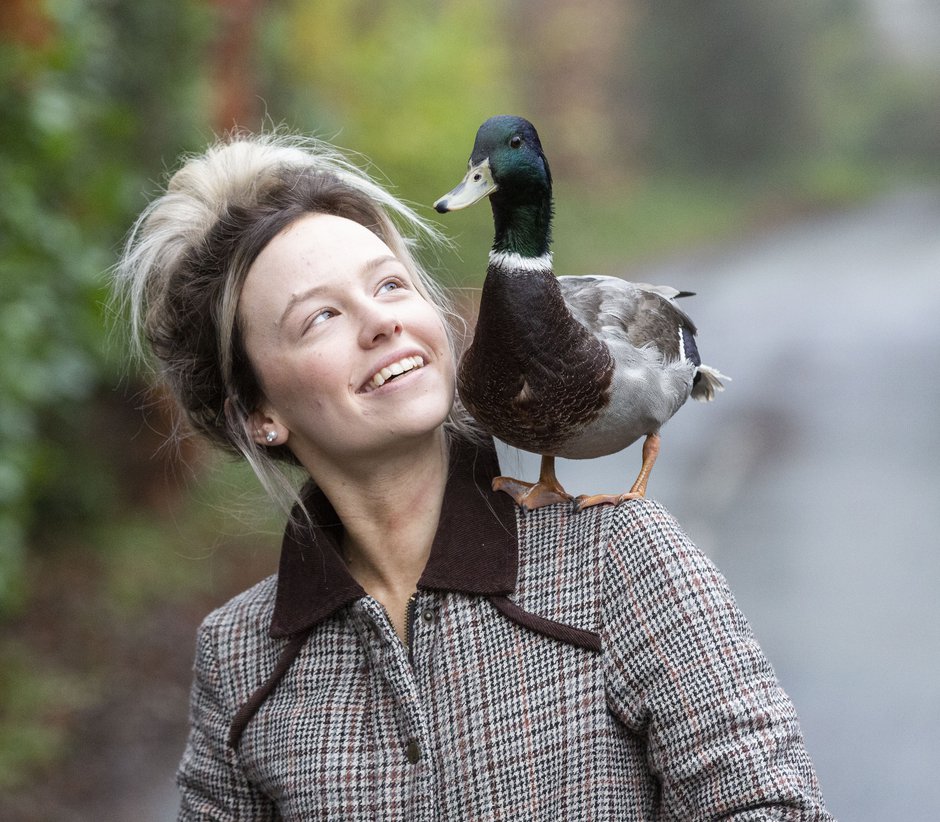 Image by: Lee Mclean SWNS
Image by: Lee Mclean SWNS
Jessica lives next door and took over from her dad later that day and has fed, cared for and nurtured Denzel every day since.
She built him an incubator and bought a heat-lamp for when he was young, which Denzel eventually grew out of at the end of August.
Jessica and plasterer Adam chose not to clip his wings and built Denzel a pond and shelter outside and let him roam around the garden for fun.
He spends his days outdoors - like every other duck - but unlike the rest of his breed sleeps in the warmth and comfort of a house.
Denzel typically snoozes wherever he likes at home but his two favourite places to take a nap are in front of the log burner or on the sofa.
Jessica said: “He has a duck house outside with a pen and a little pond. We feed him corn and occasionally give him meal worms as a treat.
“One of his favourite things to do with us is sit in the garden and dig up mealworms.
“He will sit on my shoulder too and I can walk around the house with him on there. When he was young he used to sit on my head. I think he might have seen it as a bird’s nest.
“My boyfriend is obsessed with him and they have a special connection for sure. He pecks me sometimes but follows Adam around wherever he goes.”
Unfortunately for Jessica and Adam, ducks are not the easiest animals to toilet train and they do find themselves cleaning up after Denzel around the house.
Jessica said the couple are now looking to adopt a female duck so Denzel can start a family.
She’s hopeful of one day having her very own duck nursery in her back garden.
Video by: Gabriella Petty
A 'social' robot recently on the cover of Time Magazine held BINGO lessons for OAPs in a care home
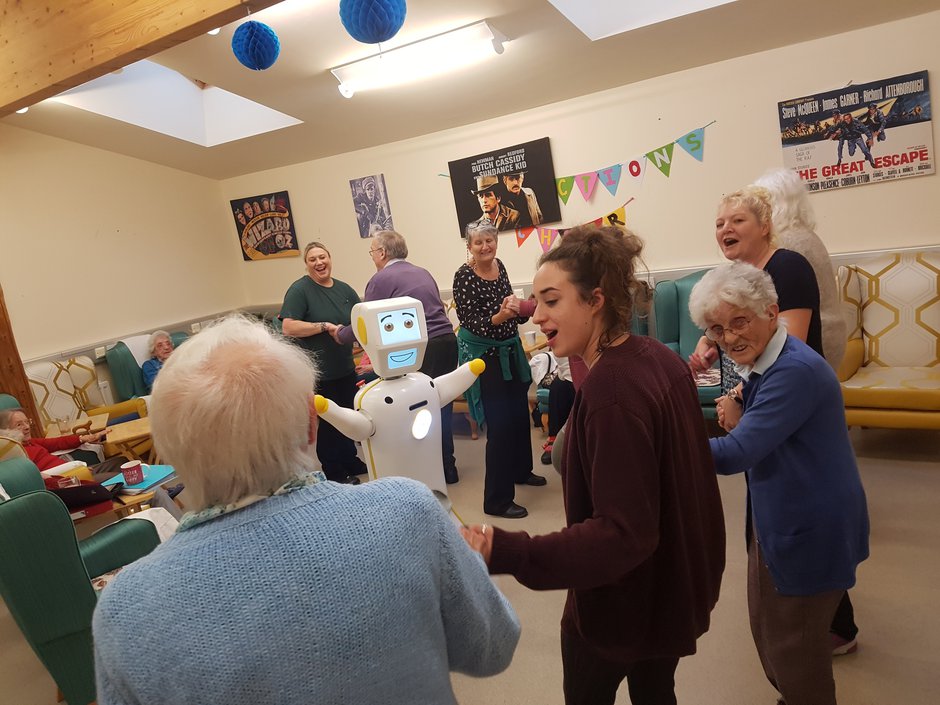 Image by: Jon Mills
Image by: Jon Mills
This is the hilarious moment a 'social' robot recently on the cover of Time Magazine held BINGO lessons for OAPs in a care home.
Stevie the robot was designed to keep people company and is so advanced he was named one of the inventions of 2019.
Now the robot designed by a team from Trinity College Dublin, Ireland, has visited Reflections day centre in Camborne, Cornwall.
He has already been keeping the elderly company and hosting bingo sessions to keep the residents entertained.
Recently back from a visit to the States, Stevie has been placed into the care of experts from the University of Plymouth’s Centre for Health Technology.
Dr Conor McGinn, assistant professor at Trinity College Dublin, said: “This pilot is the start of an exciting new relationship with the University of Plymouth.
"Two things particularly excite me: a chance to link up with Plymouth in the field of robotics, and the potential to test Stevie in Plymouth and Cornwall for his very first UK pilot.”
"The aim with Stevie was to create something that empowers people to use it, whether that is service users or patients.
"We want people to like Stevie, and so he is deliberately not intimidating and non-judgmental. "
His creators describe Stevie as “the world's most advanced social robot”, and he has recently been named among Time’s 100 best inventions of 2019.
Dr McGinn continued: "People have a very subtle ability to pick up social clues, so he has to be really finely tuned.
"We haven’t had anyone who hates him yet, although some take longer than others to get used to him.
“Some older people actually find it easier to open up and talk to a robot than a person.
"Running a game of bingo might seem frivolous, but if he can increase happiness and reduce loneliness, both of which have significant health implications, Stevie will be proving his value.”
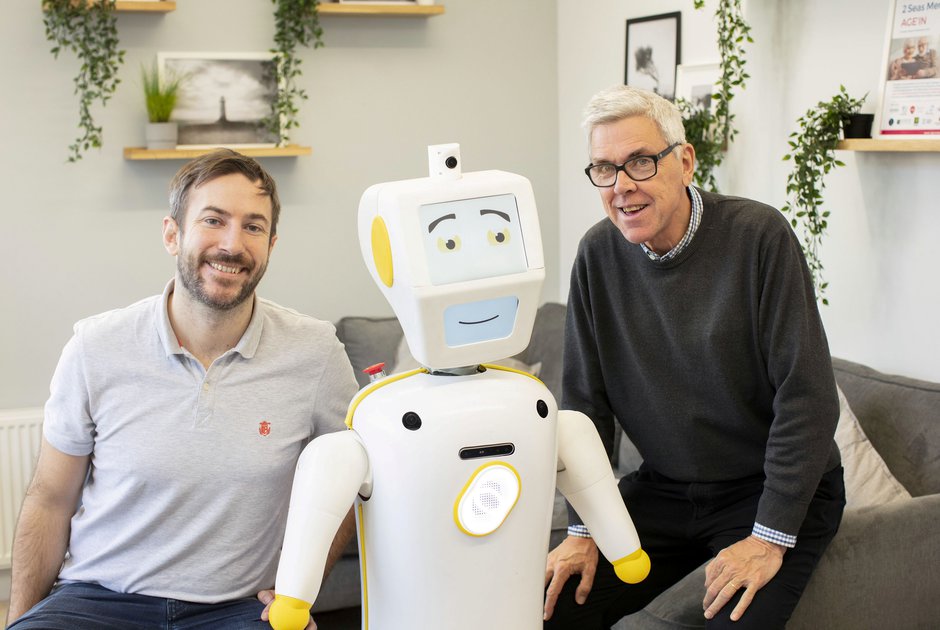 Image by: Steve Chatterley
Image by: Steve Chatterley Image by: Jon Mills
Image by: Jon Mills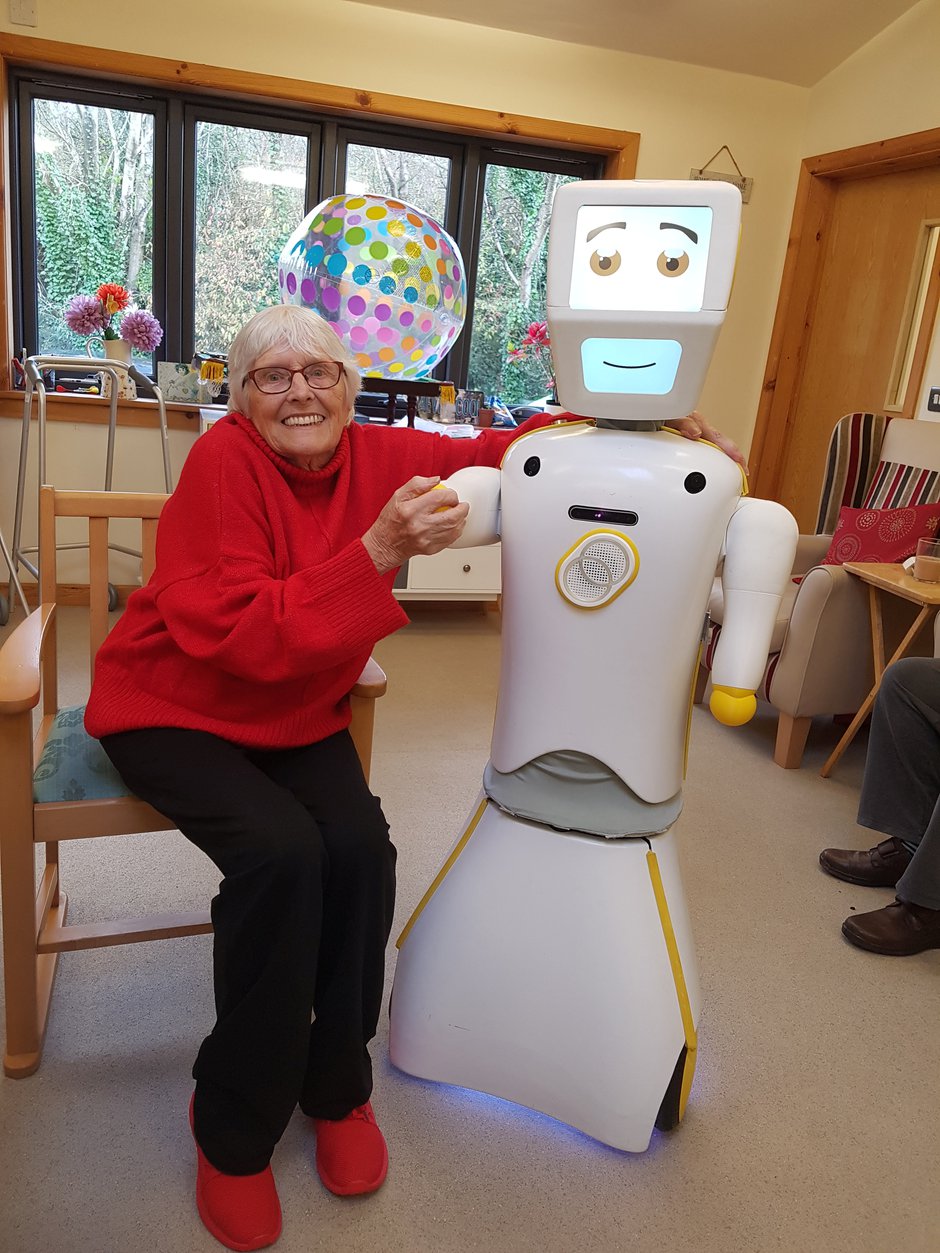 Image by: Jon Mills
Image by: Jon Mills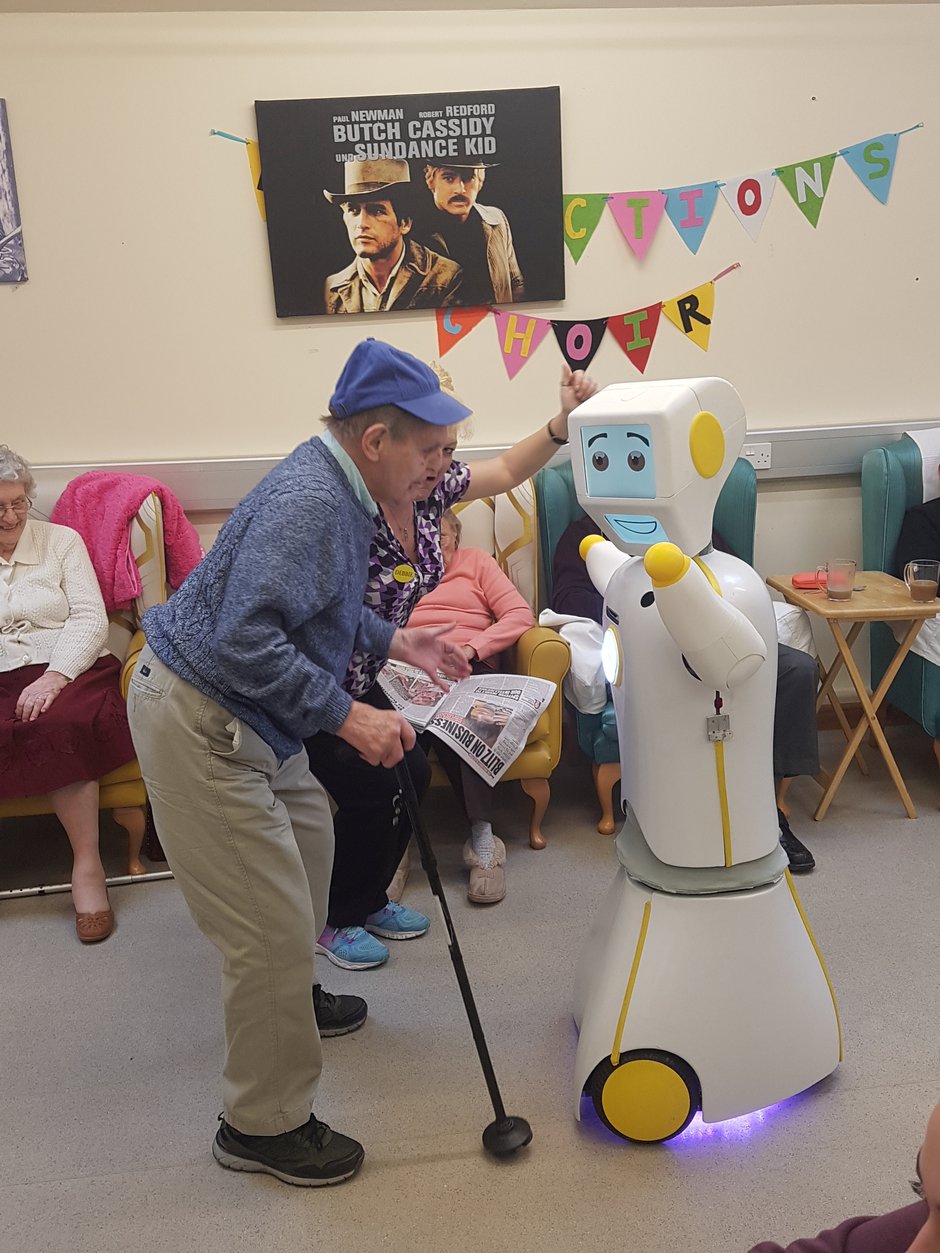 Image by: Jon Mills
Image by: Jon Mills
During the two weeks Stevie is spending at Reflections, he will carry out a range of activities - including leading a game of bingo.
He will also spend time with clients of the centre, and researchers will monitor his performance and gather feedback from staff.
And Stevie is already proving a hit.
A spokesperson for the care home said: "He has arrived at Reflections. His 1st shift was a success and we are all looking forward to having his help and company over next 2 weeks.
"He has been taking a group for musical bingo, dancing and falling in love. All in a days work for Stevie."
A key test will be whether Stevie can successfully keep people engaged.
It is hoped Stevie’s presence will boost wellbeing and social interaction, while freeing up human staff to work with individuals needing more attention.
Researchers from two EU-funded projects in the Centre for Health Technology are involved with the Stevie trial.
Professor Ray Jones leads the eHealth Productivity and Innovation in Cornwall and the Isles of Scilly (EPIC) project.
Professor Jones said: “It is an honour to have hosted Stevie at the University and to work with him in a care setting, and it shows the idea of ‘Testbed Cornwall’ already has the clout to attract world-leading technology.
“However, Conor and his team are only one of the many we are helping to test ideas, products and technology in Cornwall.
"EPIC aims to develop and use eHealth – things like websites and apps as well as robots – to improve health and wellbeing in Cornwall.
"In addition, we want to create highly skilled jobs in Cornwall to boost the economy.”
Video by: Ashley Moran
THE LAUGH JEDI – This is the adorable moment that the tiniest little Star Wars fan couldn’t contain his happiness at meeting his hero, Chewbacca in person.
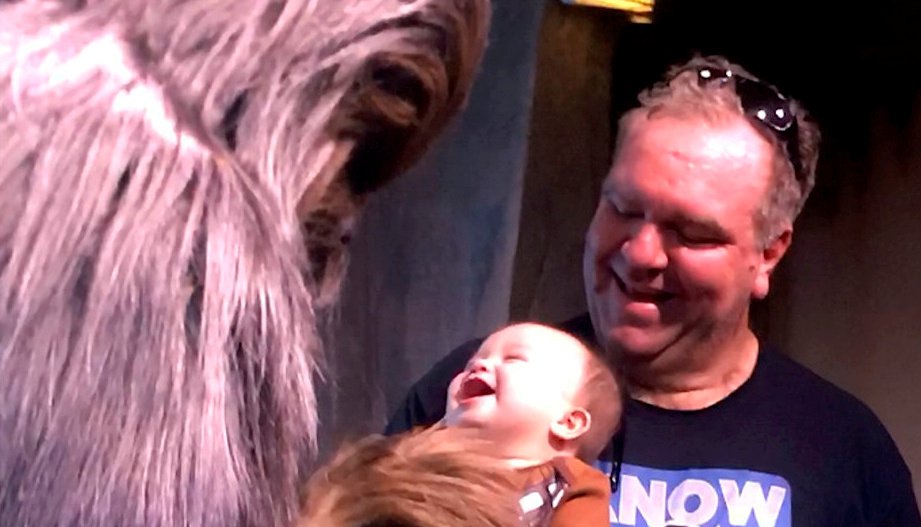 Image by: Rachel Herrholz
Image by: Rachel Herrholz
The LAUGH Jedi – This is the adorable moment that the tiniest little Star Wars fan couldn’t contain his happiness at meeting his hero, Chewbacca in person.
The footage shows an 8-month-old babies’ priceless reaction as he giggles his head off after he meets a Disney World character actor dressed as everyone’s favourite Millennium Falcon Co-pilot, Chewbacca.
“Lil Chewie” the 8-month-old baby boy was visiting Disney’s Hollywood Studios at Disney World Resort, Florida with his grandparents Rachel and Eric Herrholz.
The lifelong force fanatics had taken their grandson to the ‘Star Wars launch bay’ section of the tour when the wholesome events were captured on film.
The actor dressed as Chewie begins investigating the baby completely in character, gently poking at him and tickling his belly.
The tickling and Wookie roar sound effects prompt ‘Lil Chewy’ to let out giggles and squeaks of the purest kind of joy.
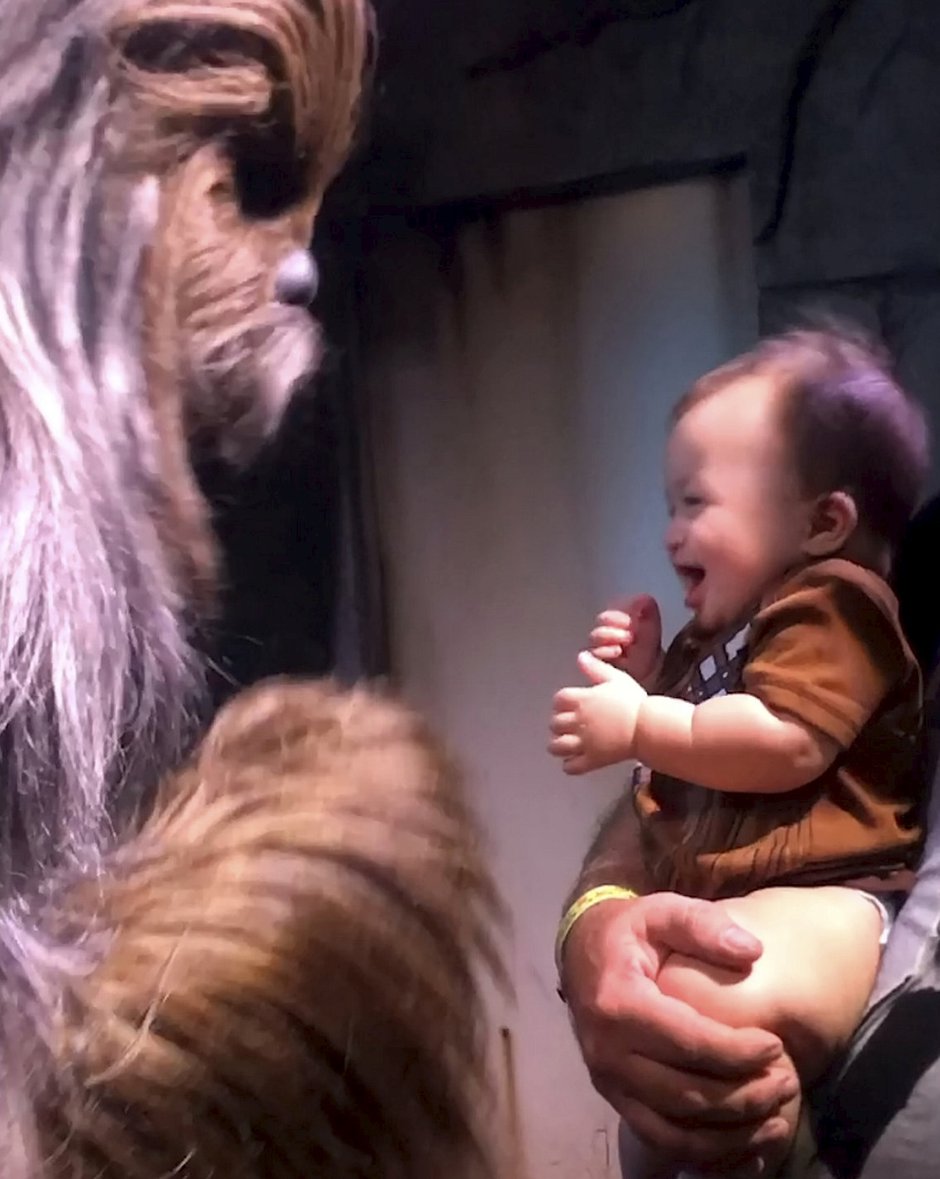 Image by: Rachel Herrholz
Image by: Rachel Herrholz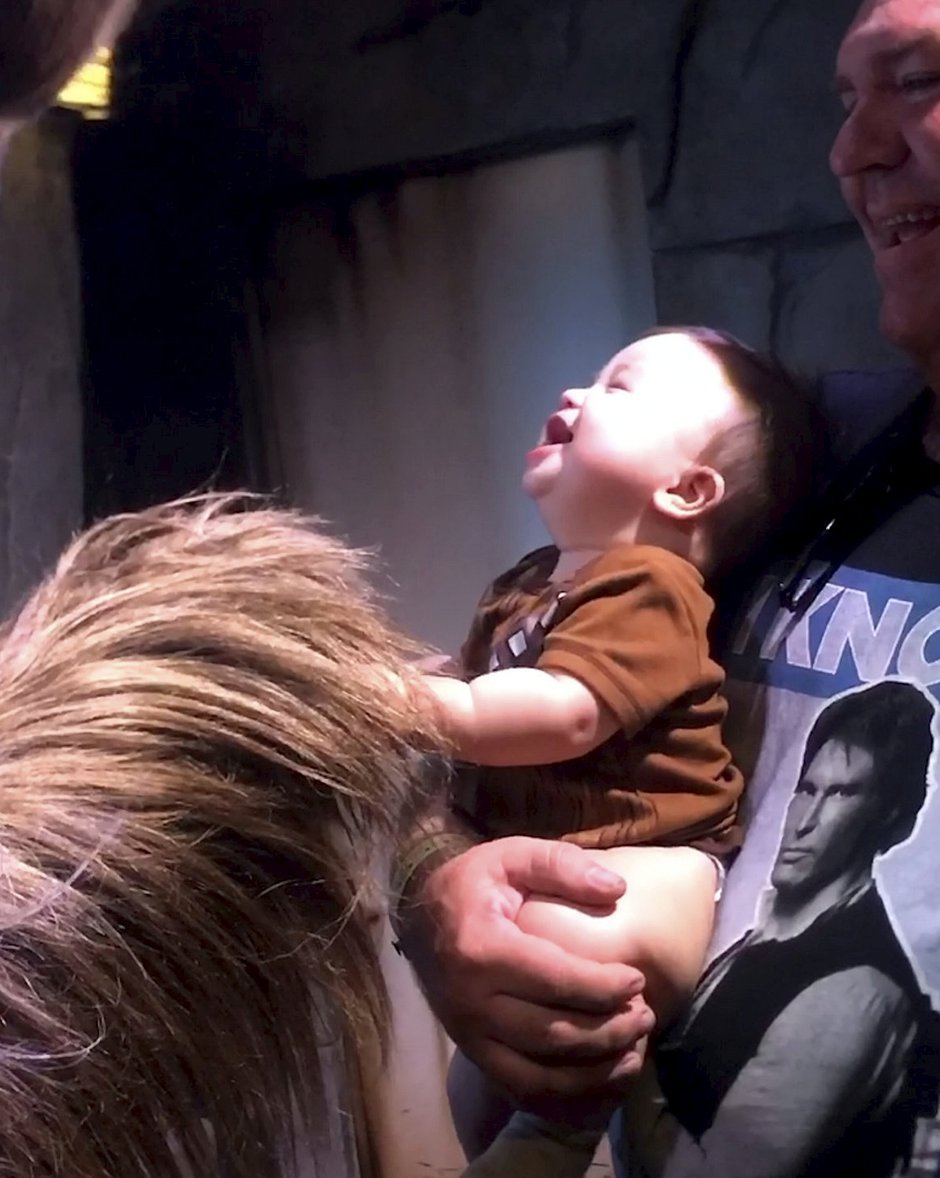 Image by: Rachel Herrholz
Image by: Rachel Herrholz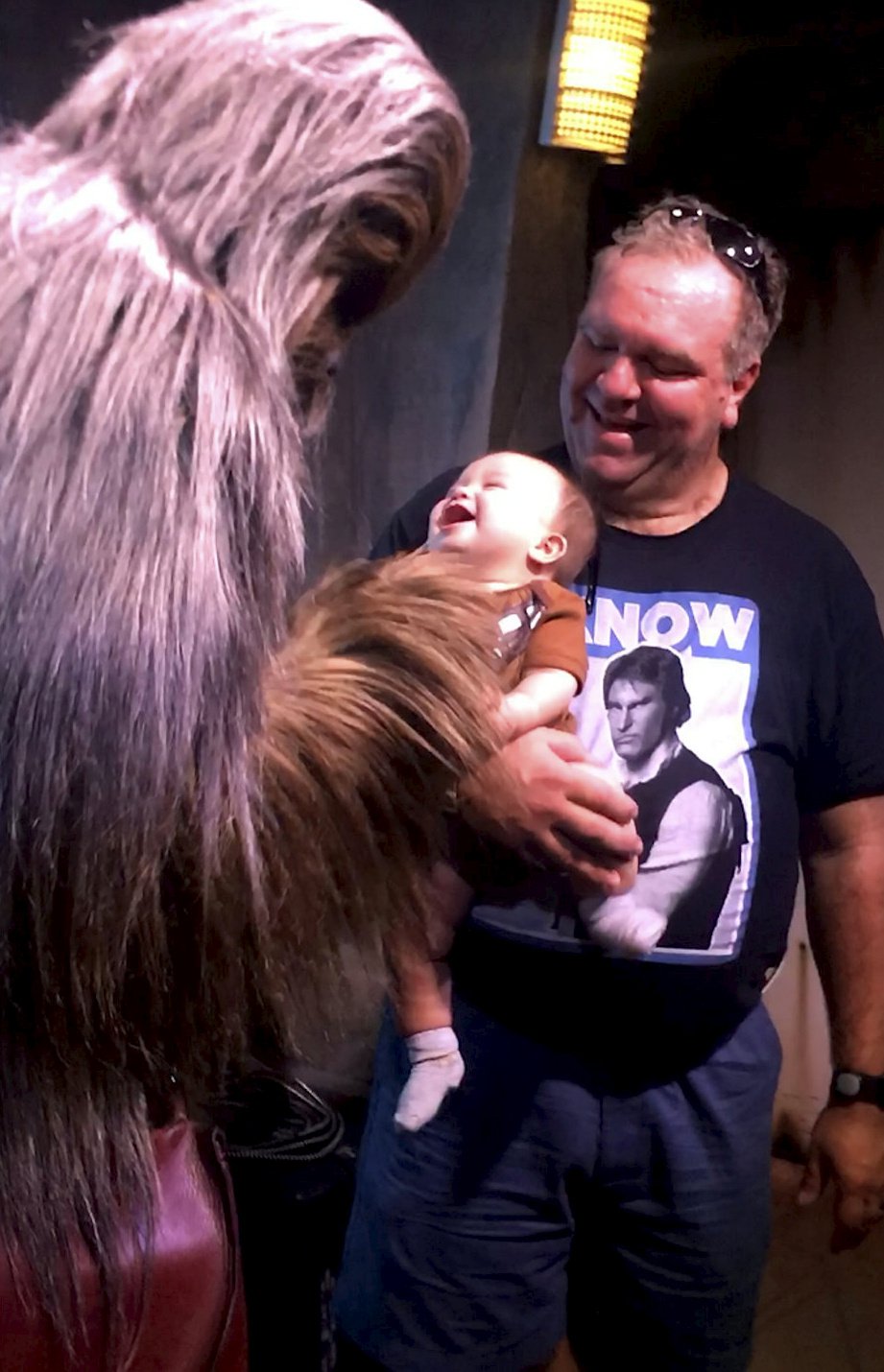 Image by: Rachel Herrholz
Image by: Rachel Herrholz
The video has since been viewed more than 2 million times on Rachel’s Facebook page.
Rachel said: “This was Lil Chewie’s first visit with Chewbacca. We dressed him in a Chewbacca outfit, and Eric wore a Han Solo shirt.”
“We were not expecting him to react the way he did. Chewbacca came over to get us.”
“Next thing I know I heard him Laughing. I looked up and he was belly laughing.
Chewbacca was just as excited. I started to record. I was amazed and I wished his Mom and Dad were with us.”
“I am in awe with the reaction to the video. We originally shared it so friends and family can see it. Last Sunday all of a sudden, it took off.”
“I am blessed, that my grandson can make people smile and bring them happiness in this world we live in.”
Video by: Rachel Herrholz
Mum forced to choose between letting her son's brain die or leaving him PARALYSED from surgery
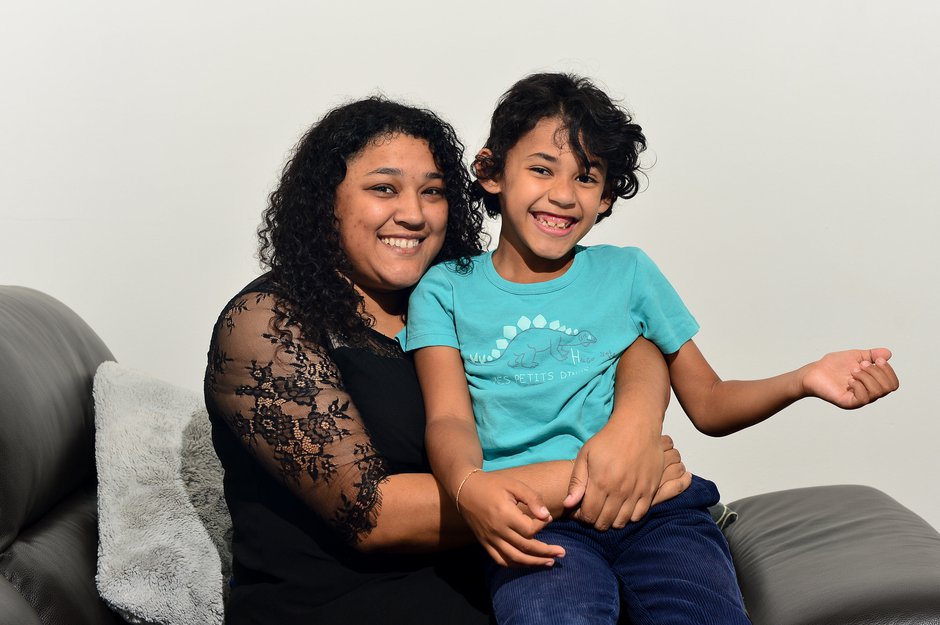 Image by: Tristan Potter SWNS
Image by: Tristan Potter SWNS
A mum faced the choice of leaving her son to battle life-threatening seizures or risk paralysing him - by removing part of his brain.
For the past seven years, Stephanie Bailey, 32, has done everything she can to help her son Gabriel, seven, in his battle with epilepsy.
But his condition just got worse, until he was having up to 70 seizures a day and couldn't go anywhere or do anything alone.
Doctors eventually said the only possible cure from life-threatening seizures was a risky operation to remove part of his brain.
But they said the op might not work, and doctors warned his mum Stephanie that even if it did, he could be paralysed permanently on his left side.
She agonised over the decision for a week - and woke up from the nine-hour operation unable to move the entire left side of his body.
Thankfully Gabriel's paralysis was not permanent and Stephanie's little fighter is already back on his feet just four months after surgery.
Gabriel has left side weakness that is slowly improving and he is even practising for a dance competition in Germany - something unimaginable before.
Teaching assistant Stephanie from Oxford said: "Choosing to send my son for brain surgery that could leave him paralysed forever was the most difficult decision of my life.
"If we didn't have the surgery, the doctors said he wouldn't be able to do much as he gets older - he'd be in a vegetative state by the time he was a teenager.
"Gabriel is the most amazing little boy and I couldn't bear the thought of his condition destroying him like that over time so I chose the surgery.
"The doctors couldn't predict if the paralysis would be permanent or not, so we took the risk that he could be paralysed forever from the surgery.
"By some miracle, my brave little boy is back on his feet already, running and dancing, just four months after surgery.
"He's only had ten seizures since the surgery, and I'm just so happy that the hardest decision I've ever made was the right one."
Stephanie, who is a teaching assistant for a special needs school in Oxford, welcomed her only son Gabriel in April 2012 with her then partner handyman Jose Pestana, 51.
Gabriel was a healthy and happy baby until he started having seizures when he was 7 months old.
With Gabriel suffering with up to 70 seizures per day, doctors suspected a brain tumour, so rushed him for an emergency MRI and he was diagnosed him with a cortical dysplasia.
Cortical dysplasia occurs when the top layer of the brain doesn't form properly and it is one of the most common causes of epilepsy.
Gabriel started taking daily anticolvulsant medication in January 2013 and he was seizure free until his first birthday - when he had a seizure while blowing out his birthday candle.
From then on, he was only ever seizure free for a maximum of two weeks.
Unsuccessful medicine changes meant Gabriel's epilepsy had become intractable and he was subject to anywhere from 10 to 40 seizures per day.
Stephanie said: "I felt so sad for Gabriel - he had to have 100% supervision and needed assistance to go to the toilet.
"I had to go everywhere with him, even around the house, because his seizures were so frequent and spontaneous.
"He couldn't play in the park without me holding his hand, and he had to bed fed because he'd have seizures mid meal with food in his mouth.
"He had seizures during the night which meant we never got much sleep and he was usually too tired to go to school so he'd stay at home with my twin sister whilst I went to work.
"It was so hard, especially because he just wanted to play like any other little boy and have some independence.
"Gabriel discovered a passion for dance, and joined KC's School of Dance in Oxford with when he was 4, with his teachers being very understanding of his condition, just taking him to the back of the class when a seizure struck and then letting him join back in.
"We learned to cope with Gabriel's seizures because we didn't have another option.
"Gabriel's father Jose and I split up a few years ago but Jose is amazing with Gabriel, he's very much still involved and is always in the family home so that Gabriel has two consistent parents.
"Gabriel is my first child so I knew no different but as he grew older, I learned to live on auto-pilot - going to work, caring for Gabriel and making life as fun as possible for him."
Gabriel's medication dosage was slowly increased over the years until December 2018 when he underwent a stereo EEG at Bristol Children's Hospital.
Stereoelectroencephalography (commonly known as stereo EEG) is a minimally invasive procedure where electrodes detect the origins of seizures in the brain.
Some 14 wired rods were bolted into the six year old boy's skull with multiple wires entering his brain in order to perform brain mapping.
Doctors stimulated Gabriel's brain by sending electrical impulses to parts of the brain where seizures were surfacing.
Seizures do not always originate from the area of the brain where they surface, so doctors triggered seizures to see how much of the motor area of the brain would be affected.
Findings from the EEG showed the seizures were coming from Gabriel's cortical dysplasia, and that removing the undeveloped part of the brain would give the young boy a 50% chance at seizure freedom.
However, the activation of certain rods saw Gabriel unable to use his left hand or foot, meaning he could be left paralysed on his left side by the removal of that part of the brain.
Stephanie was left with a choice no mother should have to make - leave her son's brain to slowly die with constant epileptic seizures, or paralyse her boy through brain surgery.
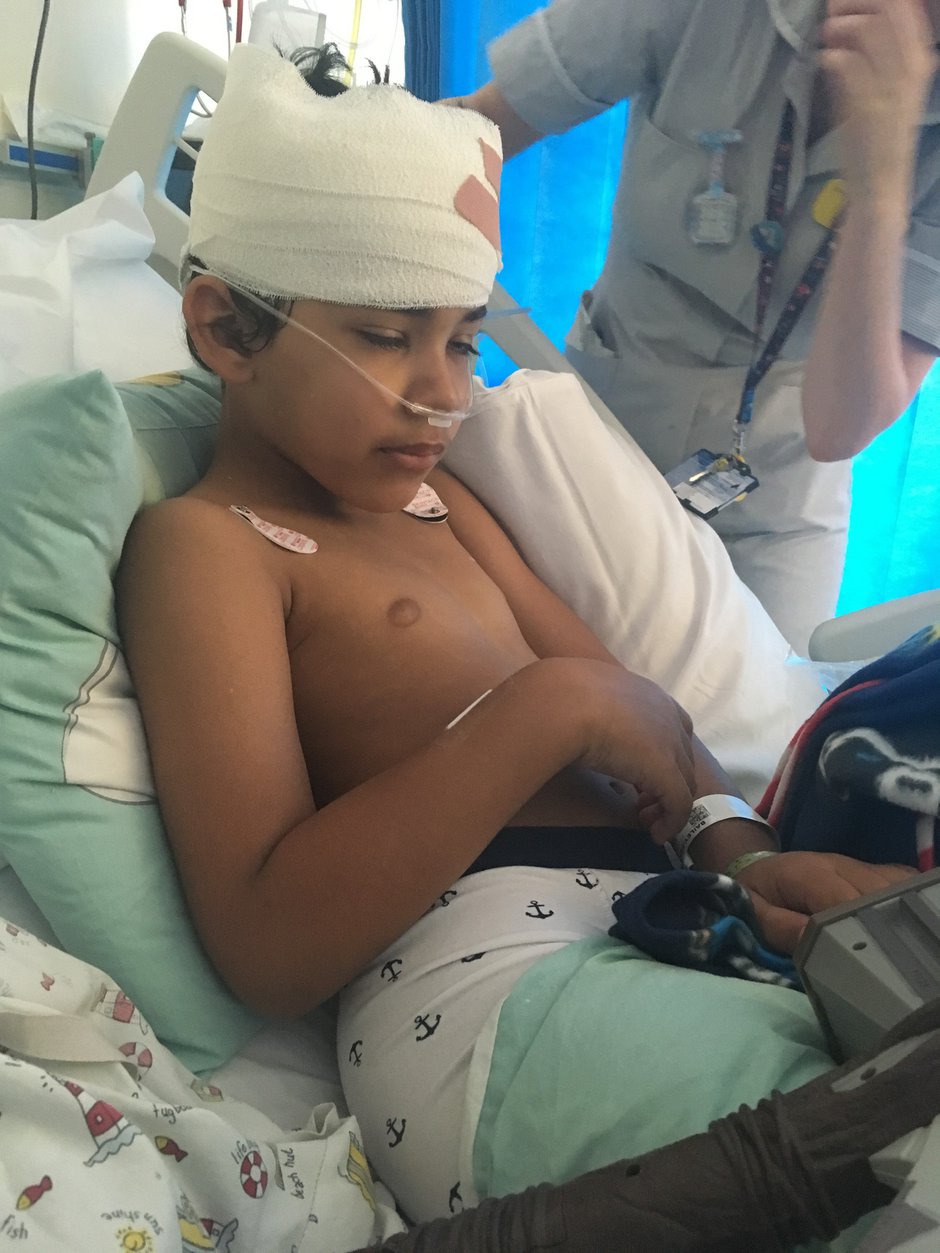 Image by: Stephanie Bailey
Image by: Stephanie Bailey Image by: Stephanie Bailey
Image by: Stephanie Bailey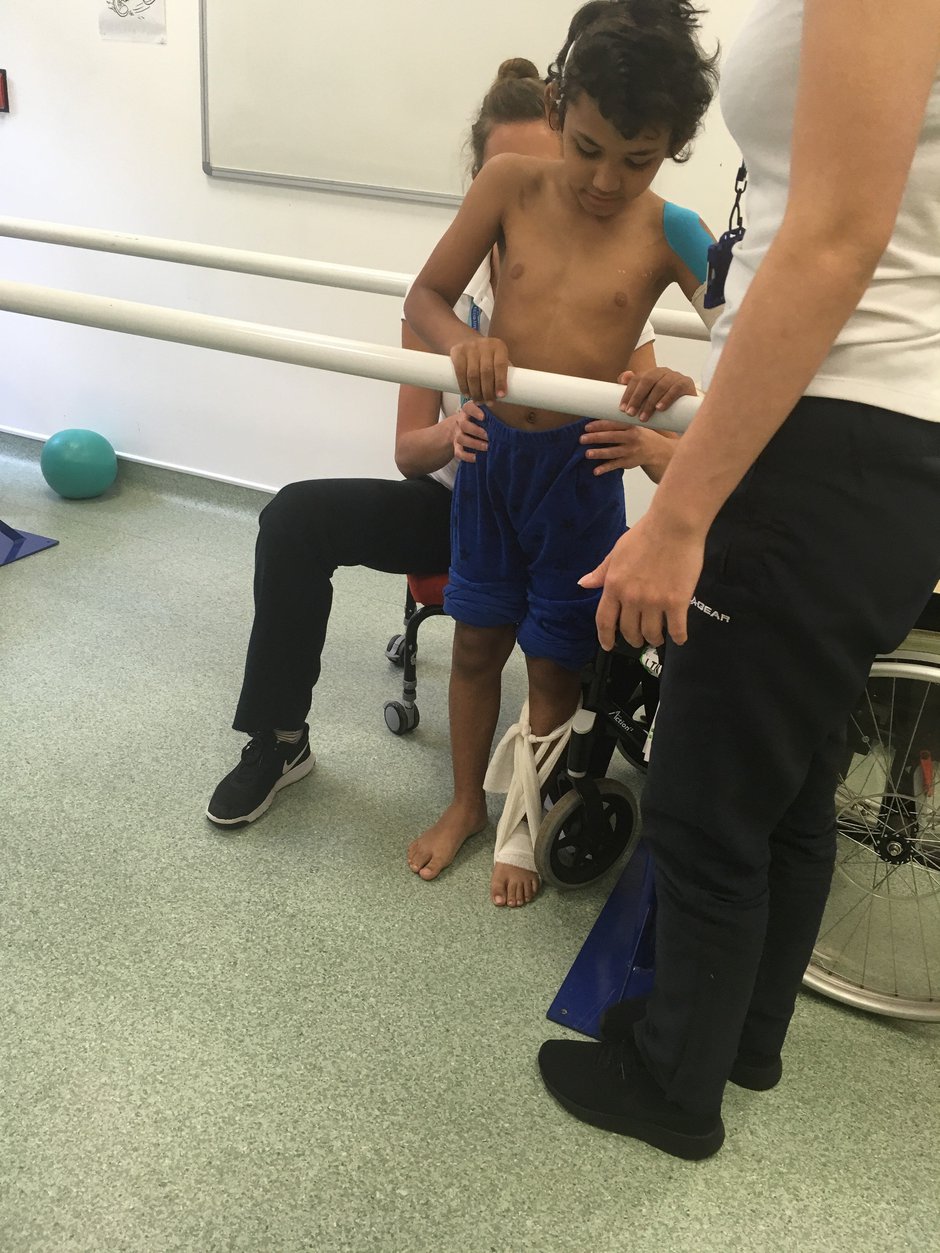 Image by: Stephanie Bailey
Image by: Stephanie Bailey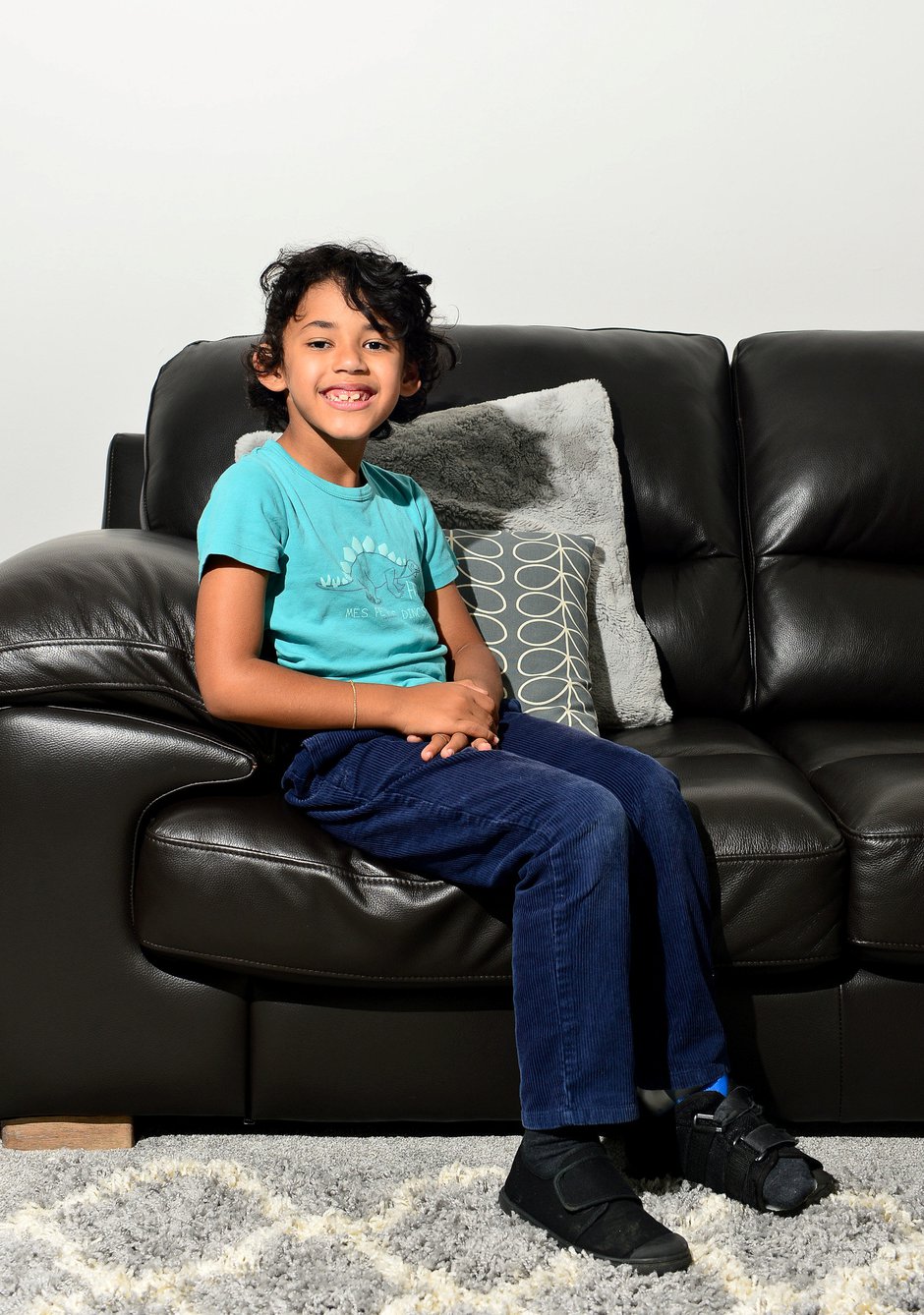 Image by: Tristan Potter SWNS
Image by: Tristan Potter SWNS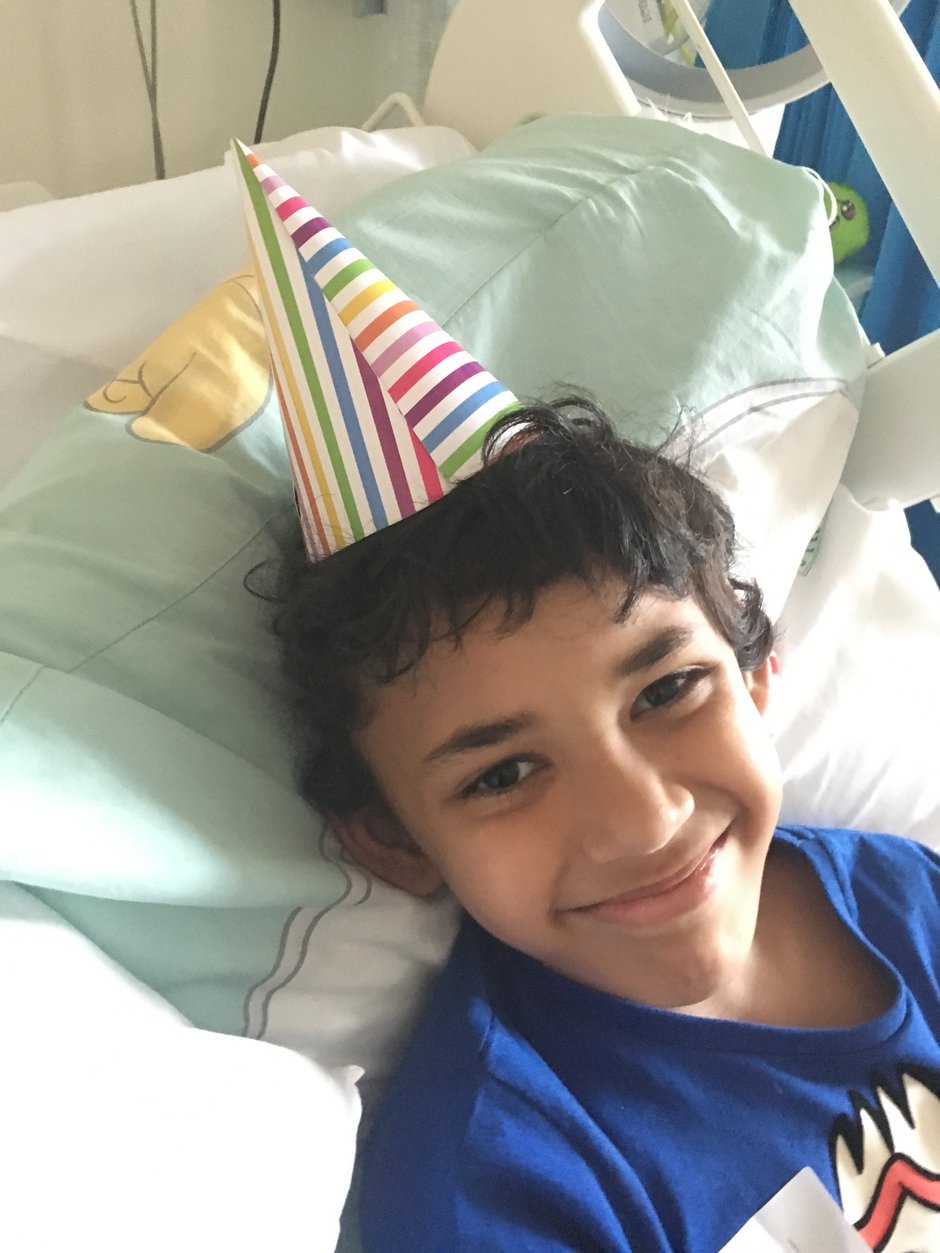 Image by: Stephanie Bailey
Image by: Stephanie Bailey
She said: "We were told that if Gabe were to have surgery, he would suffer left side paralysis that could be permanent, but he would have 50% chance of seizure freedom.
"If we didn't take the surgery option then Gabriel was likely to deteriorate, making life very limited as he grew up.
"Without surgery, there'd be a high chance of the seizures spreading to other parts of his brain and his future would be uncertain.
"It took me about a week to make the decision to go for surgery as I thought we'd rather take left sided paralysis over life threatening seizures.
"I went for the 'glass half full' approach when looking at the 50% chance of seizure freedom but I felt sick at the time and so lost, because whatever the outcome, this was on my hands.
"Gabriel loved to dance and wore his seizure helmet during lessons at his dance school, and surgery could put a stop to that forever.
"I thought how can I choose what's best for my little boy when I don't even know what that is?"
Gabriel underwent resection surgery on 7 June 2019 where doctors worked hard to remove the cortical dysplasia.
He was on the operating table for nine hours as doctors removed part of his brain with Stephanie waiting anxiously outside theatre.
The surgery was a success with doctors able to remove the undeveloped area of Gabriel's brain and greatly reducing his risk of seizures.
But when Gabriel woke up from surgery, he found he was unable to move the entire left side of his body and doctors could not determine if the paralysis would be permanent.
Unfortunately, surgery had left Gabriel with an air pocket trapped inside his brain and the little boy had to be given oxygen for 48 hours after surgery.
Stephanie said: "When Gabriel was paralysed on his left side, I was in two minds over it.
"I was so sad for him, that he couldn't move, and I was scared that I'd made the wrong decision, but those feelings were soon suppressed by the worry over an air pocket in Gabe's brain from surgery leaving him oxygen dependant for two days.
"My main concern was with what I couldn't see - the brain - rather than the physical impairments as I couldn't let myself think more than a day at a time.
"Gabriel was so happy that he wasn't having seizures - even though he couldn't move his left side, he'd wake up every morning and say 'I didn't have any seizures!'
"At the end of each day, he's say 'They must have taken all the seizures because I haven't had any today!'
"We had brought a sentimental box of happy memories with us to the hospital, and he wore the party hat from his 7th birthday to celebrate having the surgery because he was so happy to not have seizures any more.
"I thought he may not dance again, which broke my heart, but his teacher Kelly assured me that even though paralysed, Gabriel could always be a member of KC's.
"He wasn't really upset that he couldn't move his left side because his physio doctor came round everyday and gave such positive encouragement that Gabriel felt completely confident and looked forward to her daily visits.
Five days after surgery, Gabriel started to get significant movement back on his left side.
His leg progressed quicker than his arm and hand, and the brave boy was able to take his first steps just two and a half weeks after surgery.
Just over five weeks following the procedure, Gabriel managed to start independently moving his fingers on his left hand.
Gabriel was discharged from hospital on 9 July 2019, and since the surgery, he has only endured 10 small seizures lasting around 8 seconds at a time.
His brain is still healing, but four months after surgery, Gabriel is more active than ever and is even flying to Germany this month for a dance competition.
Stephanie said: "It was only after surgery that I have managed to see that I only knew half of Gabriel before.
"He's now more alert, he's clever and funny and just so full of energy.
"Gabriel has always appreciated his life even with the seizures, and is always saying things like 'I love my life' and 'my life is amazing'.
"Just a month after surgery, he took part in a dance competition in Kent and qualified in the para section, guaranteeing him a place in the IDO world championships in Germany later this month, which is just amazing.
"We are still going through uncharted waters because his brain hasn't fully healed yet, as that can take up to a year to heal, so we're just taking things as they come at the moment.
"This means that I spend my days appreciating life with him and fewer seizures, but I'm also nervous and anxious in case things change.
"I didn't realise how down and on edge I have been for the last seven years until I look back on life before surgery.
"Gabriel is my whole entire world and so much more and the thought that I could have lost him to epilepsy makes me sick but at the moment I'm euphoric that we've come this far."
Video by: Stephanie Bailey
This is the moment firefighters demanded crowds retreat after explosions could be heard during a fierce blaze
 Image by: Danny Akhtar
Image by: Danny Akhtar
This is the moment firefighters demanded crowds retreat after explosions could be heard during a fierce blaze.
Footage shows passersby watching as firemen tackled flames emerging from the roof of a two-storey building in Halifax, West Yorkshire, today (4).
Clips taken by eyewitness Danny Akhtar, 20, show the blaze and explosions can be heard, prompting firefighters to tell the crowd to leave.
West Yorkshire Fire and Rescue Service said there were no reported injuries.
Fire crews from Halifax, Illingworth, Rastrick and Odsall as well as an aerial platform unit from Huddersfield Fire Station were sent to the blaze.
The fire was filmed at around 1.30pm.
Video by: Danny Akhtar
A blue whale's heart can beat just twice a minute when it's diving for food - up to 50 percent slower than what was thought possible, according to new research.
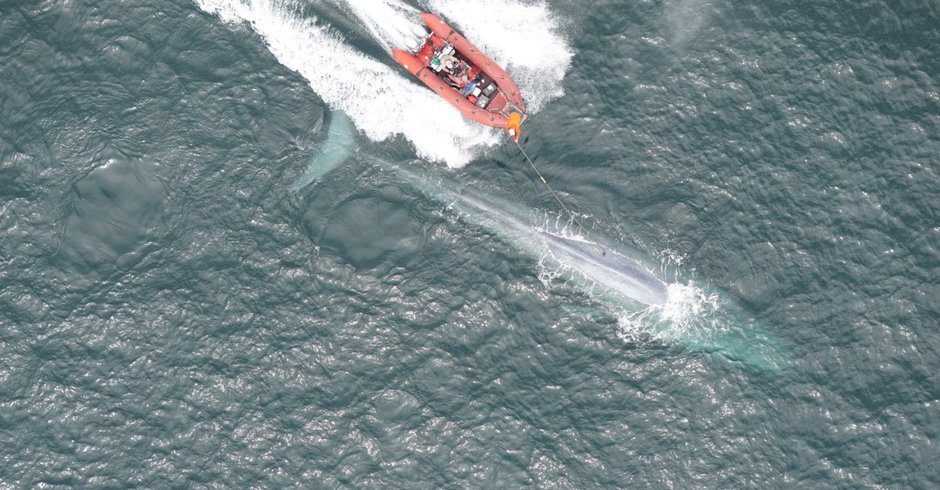 Image by: Matthew Newby SWNS
Image by: Matthew Newby SWNS
A blue whale's heart can beat just twice a minute when it's diving for food - up to 50 percent slower than what was thought possible, according to new research.
Scientists have recorded the legendary beast's huge organ for the first time in the wild.
They placed a lunch-box sized suction cap on one of them as it swam in California's Monterey Bay.
Electronic sensors inside the neon orange plastic shell revealed how its pulse slows and quickens during diving, feeding and surfacing.
The rate ranges from between two and 37 beats a minute - depending on whether the world's largest creature is underwater or at the surface.
To put this in perspective a normal resting heart rate for an adult human ranges from 60 to 100 beats per minute.
The findings published in Proceedings of the National Academy of Sciences could help save the endangered blue whale - the largest creature to have ever lived.
They show blue whale hearts are operating at extremes limiting the whale's size - and explaining why there's no animal bigger.
About the size of a small car, it weighs around 440lbs - almost a quarter of a ton. The beat can be heard from over two miles away - pumping out 2210 litres of blood each time.
Lead author Professor Jeremy Goldbogen, a biologist at Stanford University, said: "We had no idea this would work and we were sceptical even when we saw the initial data.
"With a very keen eye, Paul Ponganis - our collaborator from the Scripps Institution of Oceanography - found the first heart beats in the data.
"There were a lot of high fives and victory laps around the lab."
Some unusual features might help it perform at these extraordinary margins - adding to our fundamental knowledge of biology and informing conservation efforts.
Blue whales face threats from boats, fishing, man-made noise, pollution and climate change reducing krill - a key food.
Prof Goldbogen said: "Animals that are operating at physiological extremes can help us understand biological limits to size.
"They may also be particularly susceptible to changes in their environment that could affect their food supply.
"Therefore, these studies may have important implications for the conservation and management of endangered species like blue whales."
A decade ago Prof Goldbogen and Dr Ponganis measured the heart rates of diving emperor penguins in Antarctica. They had wondered ever since if the same feat could be achieved with whales.
Prof Goldbogen said: "I honestly thought it was a long shot because we had to get so many things right: finding a blue whale, getting the tag in just the right location on the whale, good contact with the whale's skin and, of course, making sure the tag is working and recording data."
The tag performed well on smaller, captive whales, but getting it near a wild blue whale's heart is a different task.
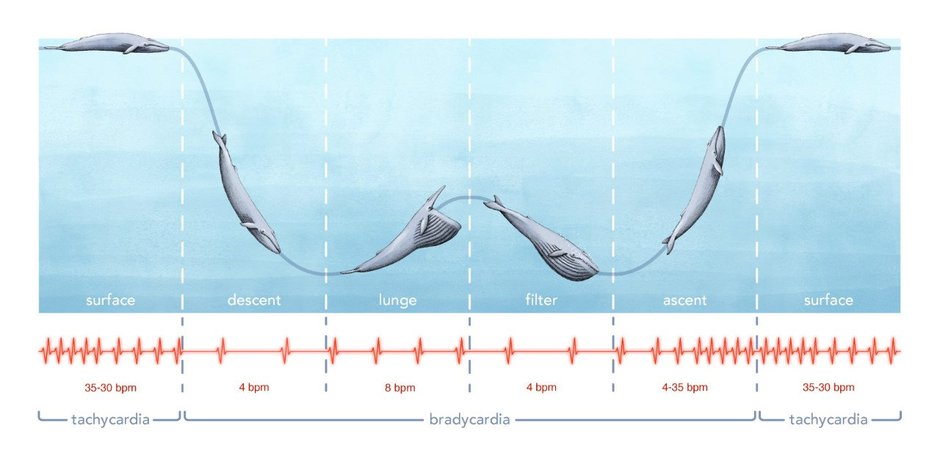 Image by: Matthew Newby SWNS
Image by: Matthew Newby SWNS
For one thing, wild whales aren't trained to flip belly-up. For another, blue whales have accordion-like skin on their underside that expands during feeding - and one such gulp could pop the tag right off.
Co author Dr David Cade, a member of the Goldbogen Lab who placed the tag on the whale, said: "We had to put these tags out without really knowing whether or not they were going to work. The only way to do it was to try it. So we did our best."
He stuck it on at the very first attempt. Over time it slid into a position near the flipper where it could pick up the heart's signals. The data it captured showed striking extremes.
When the whale dived its heart rate slowed reaching an average minimum of four to eight beats per minute - with a low of two.
At the bottom of a foraging dive, where the whale lunged and consumed prey, it increased about two-and-a-half times - then slowly fell again.
Once the whale got its fill and began to surface, its heart rate rose. The highest - 25 to 37 beats per minute - occurred at the surface where the whale was breathing and restoring its oxygen levels.
The results shocked the team. The whale's highest heart rate almost outpaced predictions - while the lowest was 30 to 50 percent below what was expected.
The researchers think the surprisingly low heart rate may be explained by a stretchy aortic arch - part of the heart that moves blood out to the body.
In the blue whale, it slowly contracts to maintain some additional blood flow in between beats.
Meanwhile, the impressively high rates may depend on subtleties in the heart's movement and shape that prevent the pressure waves of each beat from disrupting blood flow.
Looking at the big picture, the whale's heart is thought to be performing near its limits.
It sheds light on why no animal has ever been larger - as the energy needs would outpace what the heart can sustain.
The magnificent marine mammals rule the oceans at up to 100 feet long and upwards of 200 tons. Their tongues alone can weigh as much as an elephant.
The researchers are now adding more devices to the tag including an accelerometer, which could help them better understand how different activities affect heart rate.
They also want to try their tag on other members of the rorqual whale group, such as fin whales, humpbacks and minke whales.
Dr Cade said: "A lot of what we do involves new technology and a lot of it relies on new ideas, new methods and new approaches.
"We're always looking to push the boundaries of how we can learn about these animals."
Video by: Gabriella Petty
A dad who bought an eight inch snake has seen it grow into the world's biggest ever Burmese python measuring over 18FT - and still keeps it in his terrace home
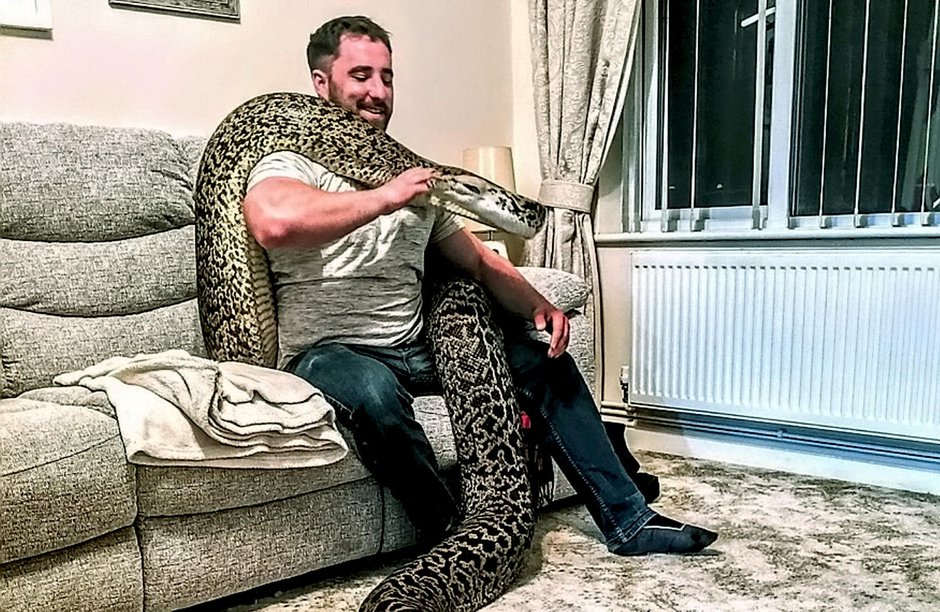 Image by: TM Gloucestershire Live
Image by: TM Gloucestershire Live
A dad who bought an eight inch snake has seen it grow into the world's biggest ever Burmese python measuring over 18FT - and still keeps it in his three bed semi.
Marcus Hobbs, 31, purchased Hexxie from a pet shop eight years ago - and watched it become a 110kg (17 stone) whopper.
He feeds the massive snake rabbits, stillborn deer, calves, goats and pigs supplied by local farmers - and it's still growing.
The animal is expensive to keep and could be lethal if mishandled - squeezing a human to death in minutes and swallowing them whole.
But IT worker Marcus is confident Hexxie will never strike - although doesn't handle her when the his sons, aged four and one, are nearby.
The whopping reptile eats and produces a chalky poo once a month - large enough to fill a bin bag.
Experts say the biggest ever Burmese python was 18ft 8ins but Marcus think Hexxie is even bigger.
He says when he last measured his pet of eight years she was over 18ft - and has grown a lot since then.
But he's reluctant to anaesthetise her for the official measurement until she’s stopped growing.
Marcus, of Tewkesbury, Glos., said: “I knew she would be big but she has shocked everybody by how much she has grown.
"I am very passionate about snakes and I try to help people understand them.
"I think people are so scared of them because they think they are going to kill them but if people come around I can talk to them all day long about snakes to reassure them.
“[But] I would not get her out with the boys around. I would only do it while they were in bed or another room.
“I don’t think she’d be dangerous towards them but you have to use your common sense and I’m a responsible pet owner."
He added: "I’m friendly with a reptile specialist and when I first got in contact with him to try and get some piglets for food he said: ‘What have you got?’.
"When I sent him a picture he said she was the biggest Burmese python he had ever seen, and he's seen them in the wild.
“He said: 'You have got to measure her for the world record’. I measured her and she wasn’t quite there yet but she’s grown a lot since then.
"She could be there now. There is a possibility she’s already a record breaker but finding out is not that easy."
Hexxie lives alongside another smaller snake, Monty, and the family dog Shiloh, a Husky.
Marcus said both snakes have gone for him before - although not for a while.
He added that the nearest Hexxie has come to attacking him was when he had to apply iodene to a skin infection.
He said: "She went for me. Not properly - more of a back off, get away type of thing. She’s nipped but she’s never latched on.
"Her mouth is full of of hundreds of pin shaped teeth like fish hooks. If she gets hold of you, you cannot pull your hand out because all the teeth are going the wrong way.
"You would have to push your hand back into her mouth to unhook her teeth. If you pulled you would be pulling her teeth further into your skin."
Marcus said Hexxie is laid back because she has grown used to being touched by humans over the years.
He said: "I handled her every day and a lot of people will not do that.
"I know people who have had snake from small and because it struck them a couple of times they have not done it again. Now they will never be able to handle that snake.
"You can’t have a snake that big that’s trying to bite you because it would mean you would not be able to go near her. Especially as she’s in a confined space.
"You would not be able to anywhere near that tank without her trying to get you.
"You have to be regimented because the only way to stop her biting you is handle her every day when she is young until she gets used to it."
Marcus needs to enlist the help of other people if he needs to move Hexxie whole but added that he knows how to peel her off, tail first if she starts to coil around him.
He cannot say for certain he’d have the strength to do so but explains that she would let out a loud hissing noise followed by a foul smell as a warning to leave well alone if she was stressed or unhappy.
He added: "I would not let it get to that stage."
Under pet laws there is no requirement for a licence to keep non-poisonous snakes and Marcus is sceptical of tales of much smaller Burmese Pythons escaping or killing.
A ten-foot one has been blamed for the death of a zoo keeper in Caracas, Venezuela previously.
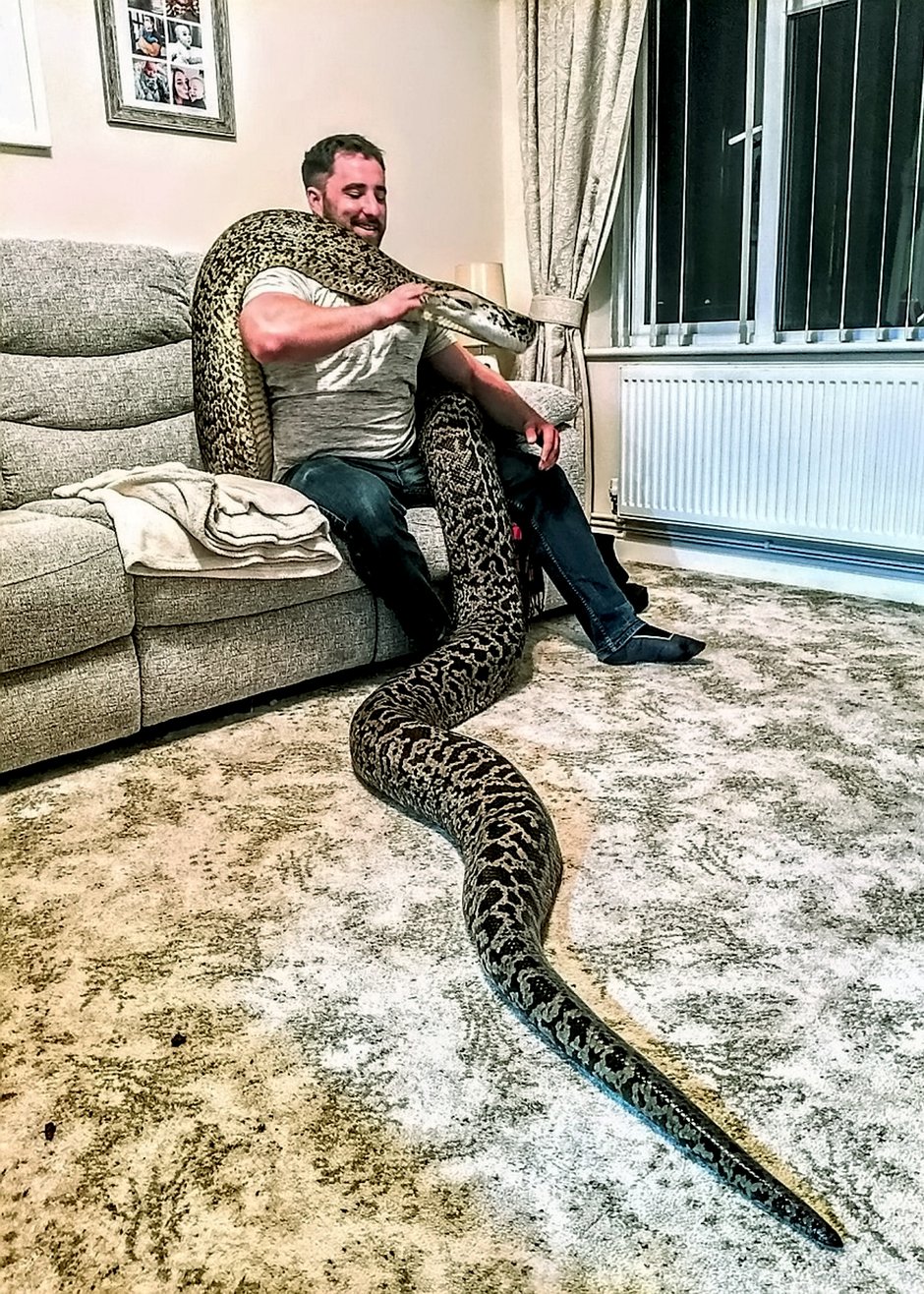 Image by: TM Gloucestershire Live
Image by: TM Gloucestershire Live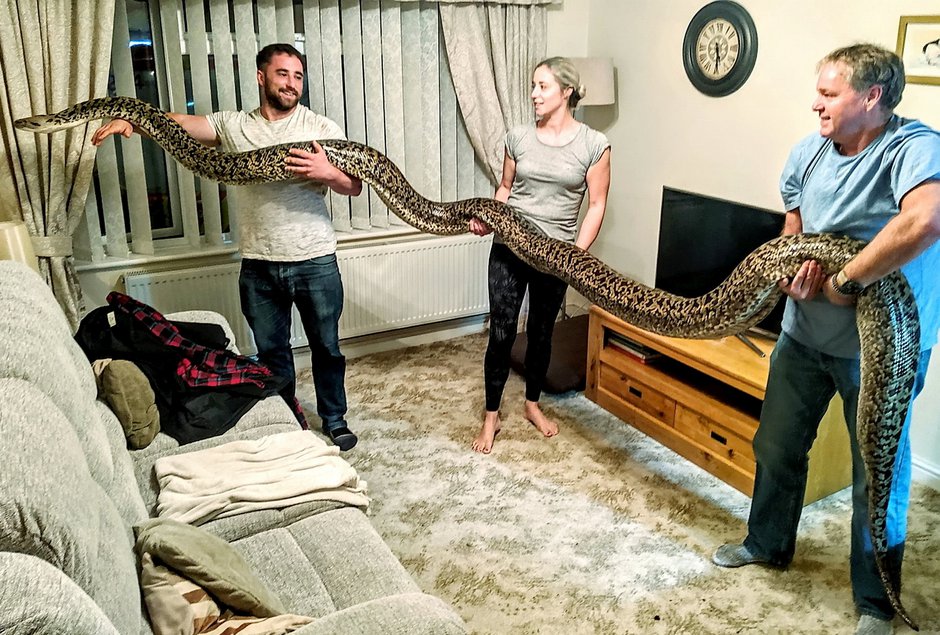 Image by: TM Gloucestershire Live
Image by: TM Gloucestershire Live
Marcus said: "A license would cost a lot of money and would not make any difference to people who are stupid or do not have any common sense.
"You couldn’t lose Hexxie. If I opened that tank door I don’t think she would even come out. She’s happy there, that’s her place.
"She’s nice and warm and doesn't want for much. Their brains are not like dogs. They don’t need excitement, they don’t suffer from boredom.
"That’s why they make such good pets. People think it’s cruel to keep them in the tank all time but they do not need or want to go far.
"If go to zoo they will have a bigger enclosure but you will not be able to see them because they will be curled up under a log.
''They don’t want to stretch out and they don’t like open spaces.
"They have simple brains. They want food water and heat. If they have all that they are happy."
Marcus paid £2,000 for the vivarium, £30 for each of the bulbs and the heating has to be constantly on full blast.
There’s also vet bills to consider and the stress of where to get food from.
Marcus caused stir when he put an appeal out on Facebook asking for farmers to donate any rabbits going to waste as food for Hexxie who can eat at least half a dozen at one sitting.
Marcus said: "Usually I have lab rabbits which are hard to get hold off and expensive but I know farmers shoot them as pests and a lot of times they get thrown away.
"People say they can’t believe I would ask such a thing but I wonder how many of them have cats or dogs. You don’t feed them carrots and broccoli, do you?
"I have never killed an animal and would never want to, but these things I have, they eat animals."
A local pet shop owner now puts him touch with farmers who can help.
Marcus had his first snake for his 13th birthday and believes it's down to watching Steve Irwin on the television.
He had royal python Monty for his 16th birthday and around a year later came home with George, a 7ft boa constrictor which later died, without telling his parents.
He said: “My family have always been into wildlife so I was always destined to get some sort of animal.
“But it’s snakes that just fascinate me. I can watch them all day long.
"When I was living on my own, years ago before I had children, if there was a power cut, I would put them in the bed with me to keep them warm.
"I would wake up in the morning and they would still be there."
Marcus met partner Amy, 31, while they both worked at a hotel in Cheltenham, Glos.
They eventually hooked up at a leaving do - and she quickly realised that it would be a case of "love me love my serpent".
She said: “I knew before we got together. We worked together five or six years before then and he always had that reputation.
“I was well aware they were part of his life...whether I liked it or not.”
Animal-lover Amy added that she was okay with reptiles, but said: "I’m more your fluffy, cute, type of animal person.”
Now the she understands her Marcus' emotional attachment to his slithering pets her main issued is how much household space they take up.
She said: “They carry a lot of stigma but they do grow on you.
"People don’t associate them with pets so they find it hard to make the comparison but you see them every day and get attached.
“If we didn’t have them I would miss them but I wouldn’t miss the space they take up.
"When we had our first it wasn’t too bad because we had a three-bedroomed, but when the second one came along we needed that third bedroom.
“Either the snakes went or we compromised the room downstairs. The snakes won and now I just accept that they are in our living room.”
The couple have bought their current house and are confident their neighbours realise they are responsible pet owners.
Marcus said: "We have not had a problem. If you think Hexxie's going to get out, get into your house, get into your bedroom and eat you while you sleep, then I think your imagination’s too strong.
"If door is closed there’s nowhere for her to go and she would not go upstairs. She just wouldn’t. It would not be worth her while. She wouldn’t need to, there’s no reason.
"If you knew anything about reptiles you would have a very different opinion.
"I would not lock a dog in cage. A dog needs exercise, a dog needs companionship, a dog needs its brain to be worked. A snake’s brain is not like that at all.”
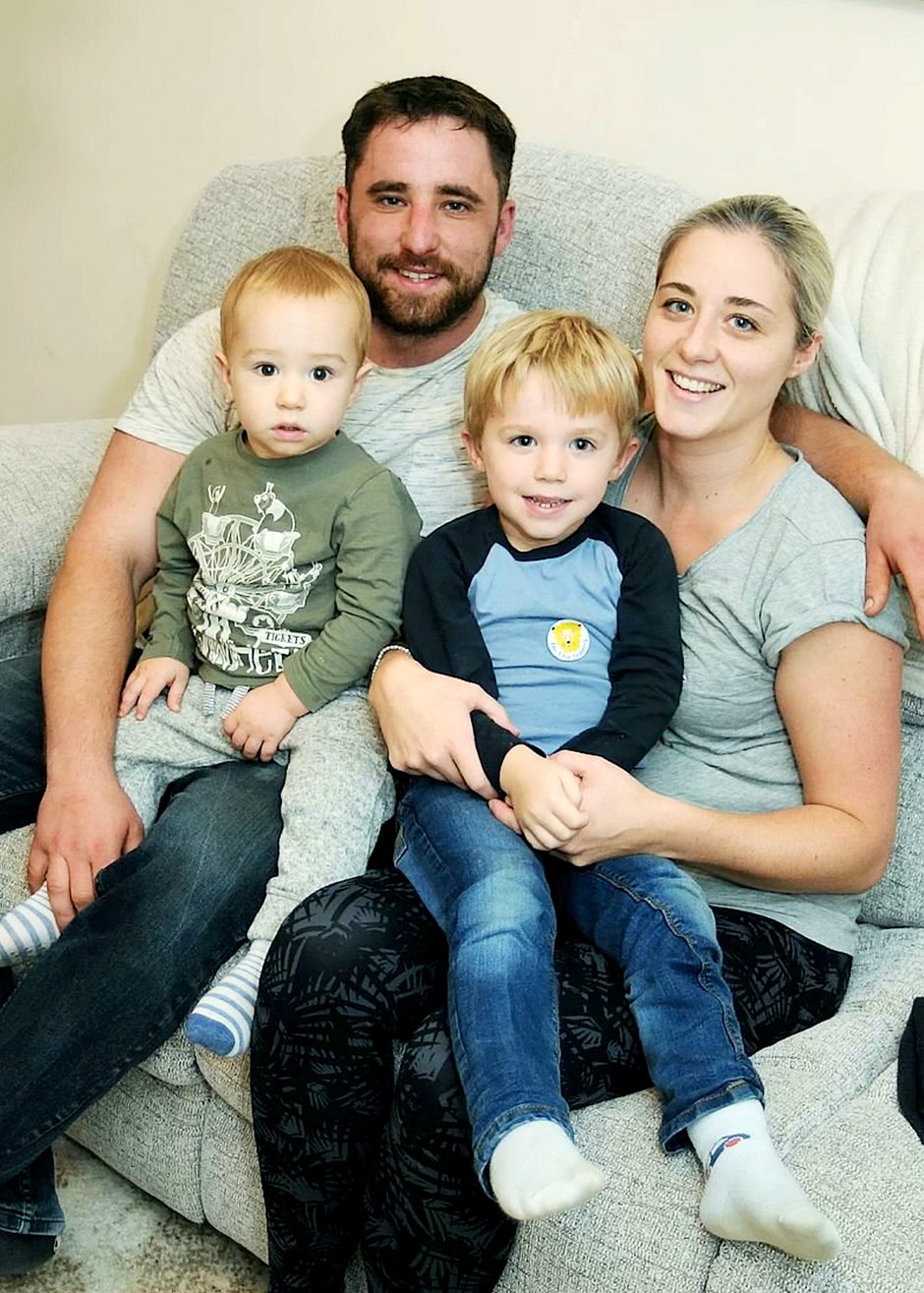 Image by: TM Gloucestershire Live
Image by: TM Gloucestershire Live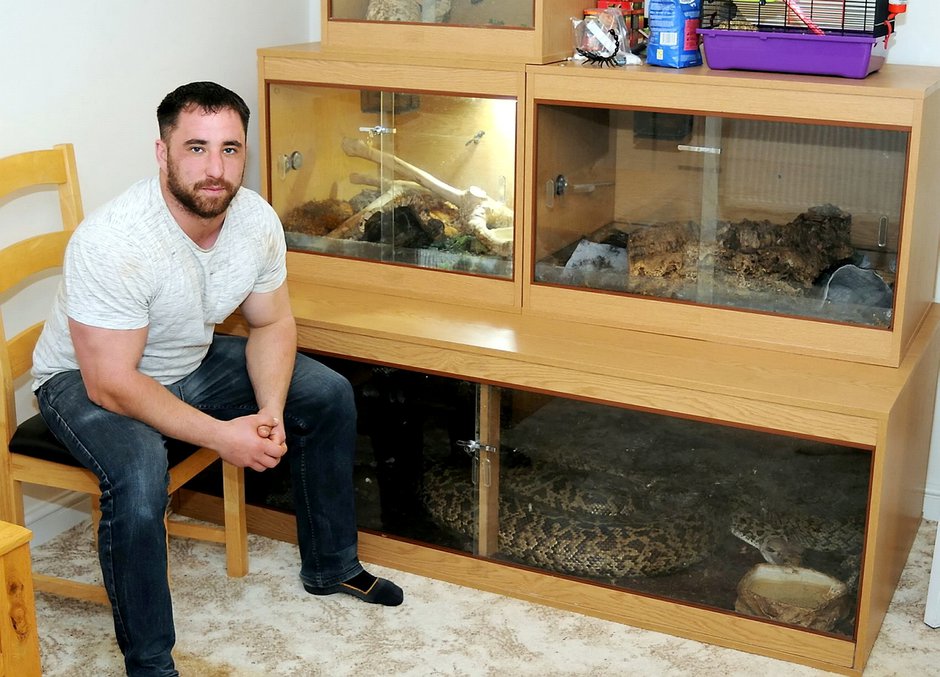 Image by: TM Gloucestershire Live
Image by: TM Gloucestershire Live
Marcus said he spends about £12 to £15 every four to six weeks on food but is given much of it for free.
He said: "I get a lot of stillborn lambs and deers. It's a couple of quid for rabbits."
Marcus said he feeds the animals to Hexxie whole - "guts and everything".
He said: "I have a bit of fun with it. I dangle it in front of her and pull it back so she thinks it's trying to get away.
''She eats six or seven animals in one sitting which lasts for about a month."
The Burmese python is housed in a six foot by three foot by three foot wooden tank with a glass front. in his living room not far from the family television.
Marcus said he spends "five minutes a day" taking care of the serpent.
He added: "It doesn't take much looking after. As long as they have got food and heat they are fine. They're extremely easy [pets]."
When asked what he would say to people who might criticise him for keeping a potentially lethal snake in the same house as his kids, he said: "She's in a locked vivarium with reinforced glass. It's very hard for her to go anywhere. She's always out only when they are out of the room.
"She wouldn't see the children as something to eat. She wouldn't like the smell. She doesn't associate the smell of humans to food. If she did she wouldn't be safe to keep."
Marcus added that he was "fully prepared" for the snake to grow to the size it has.
He said: "I've had reptiles for years. I wouldn't buy not knowing."
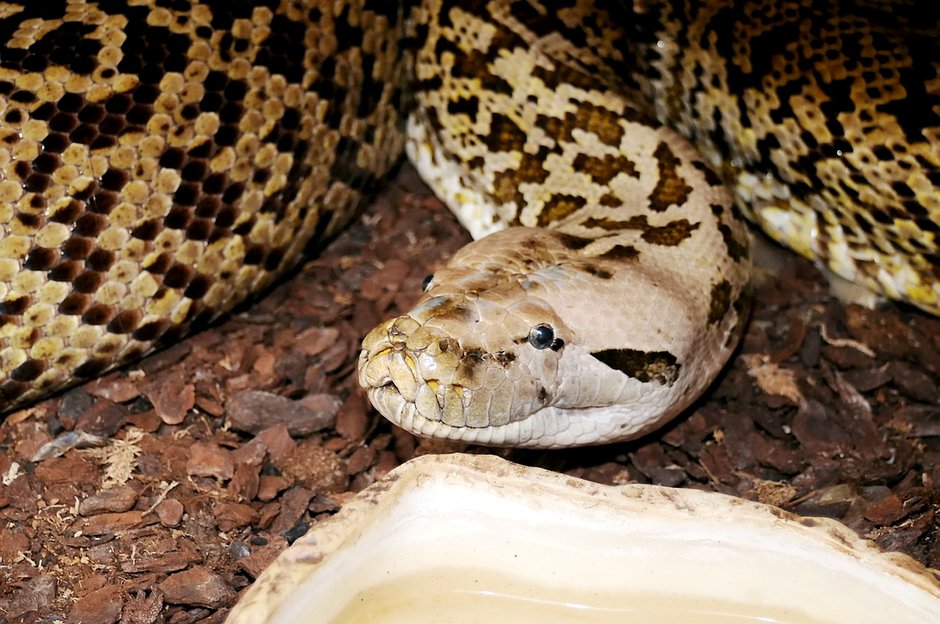 Image by: TM Gloucestershire Live
Image by: TM Gloucestershire Live
Charles Thompson, snake expert and owner of a reptile shop in Sheffield, South Yorks., said: "If they [Burmese pythons] are handled regularly they can be puppy dog tame - but that isn't to say there's no risk.
"I have no issues with people keeping giant snakes as long as they are geared up and have the correct equipment. It's all that zoos are doing. Keeping the glass locked is common sense.
"But to get it to 18-foot he would have had to cosset, love and adore that snake. He's obviously put a lot of time into it. There's no more danger than having a family dog. They [snakes] just have a specific set of problems.
"He could even let the children in the room - although I'm not saying they should handle it."
When asked about the record-breaking claims, Mr Thompson said such matters were difficult to answer conclusively.
He said: "It's one of them where somebody would have to raise their own head above the parapet and say otherwise."
Video by: TM Gloucestershire Live
OTTER-LY IN LOVE - Meet the animal-loving pensioner who has spent her life helping to raise OTTERS - and regularly walks around town with one sat on her shoulders
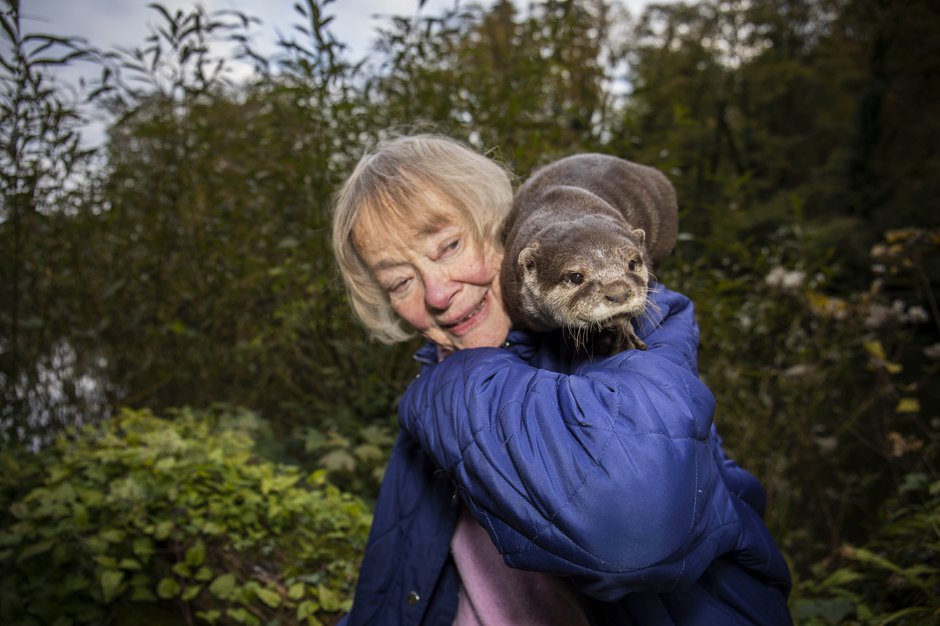 Image by: Jake McPherson
Image by: Jake McPherson
Meet the animal-loving pensioner who has spent her life raising pet OTTERS - and regularly walks around town with them on her shoulders.
Daphne Neville, 82, has kept the mammals for nearly 40 years and devotes her time to increasing awareness about the creatures.
She even takes her current pet, 'Rudi', to the shops - but said people don't mind because the otter looks "cosy and happy".
An actress by trade, Ms Neville adopted her first otter in 1980 after a friend suggested her 18th century converted water mill near Stroud, Glos., offered the perfect conditions.
'Rudi', her tenth otter, is extremely docile and is used in shows across the country.
The affectionate animal is licensed under the Dangerous Wild Animals Act 1976 because of his 36 sharp teeth, although Ms Neville said she has never had a problem.
She said: "With Rudi, I've had him since he was three weeks old. He thinks I'm his mum. I'm a part of him and he's a part of me.
"I've shown people you can have incredible bonds with these creatures. Touch wood, we have never had an accident.
"I wouldn't want to be a risk to anyone. All my otters have been immaculately behaved. I wouldn't dream of taking them out otherwise.
"We do shows all over the place. People come from miles away - especially from Australia and New Zealand. They don't have otters there."
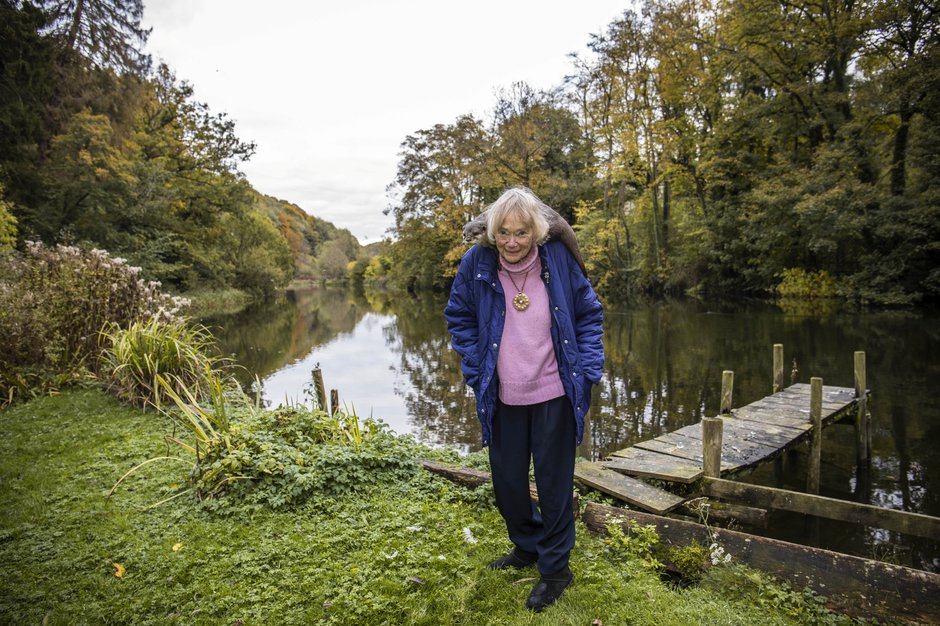 Image by: Jake McPherson
Image by: Jake McPherson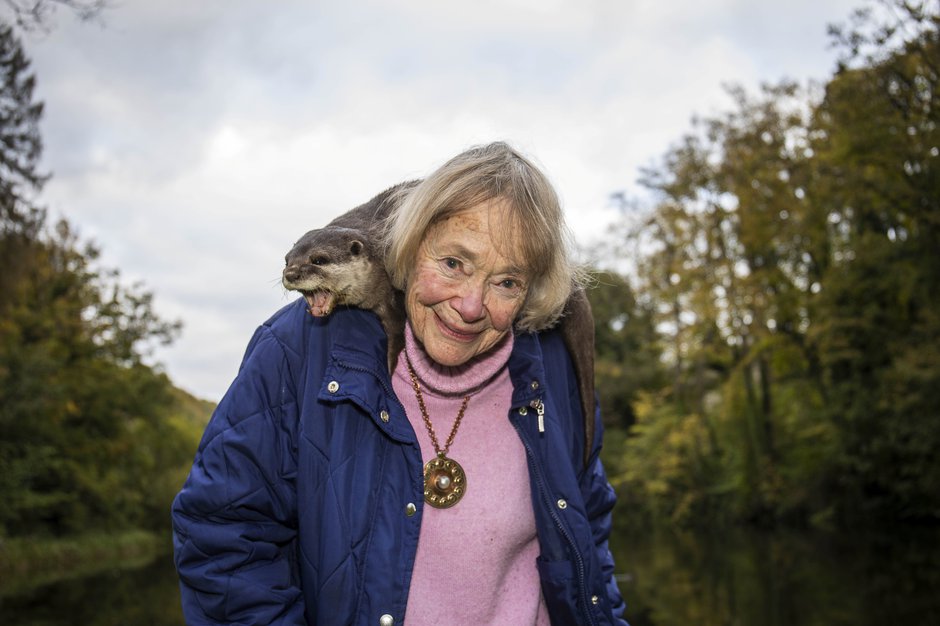 Image by: Jake McPherson
Image by: Jake McPherson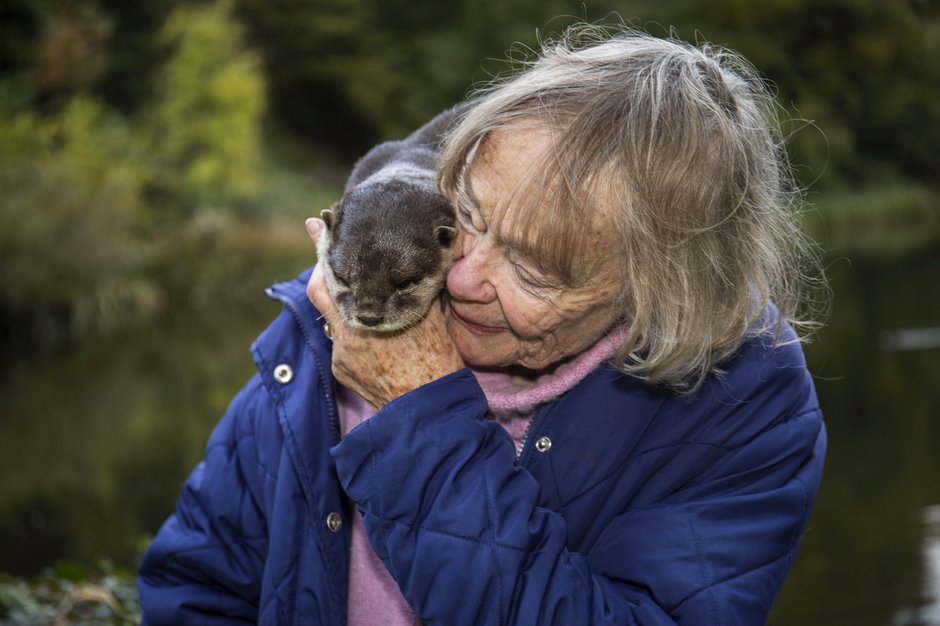 Image by: Jake McPherson
Image by: Jake McPherson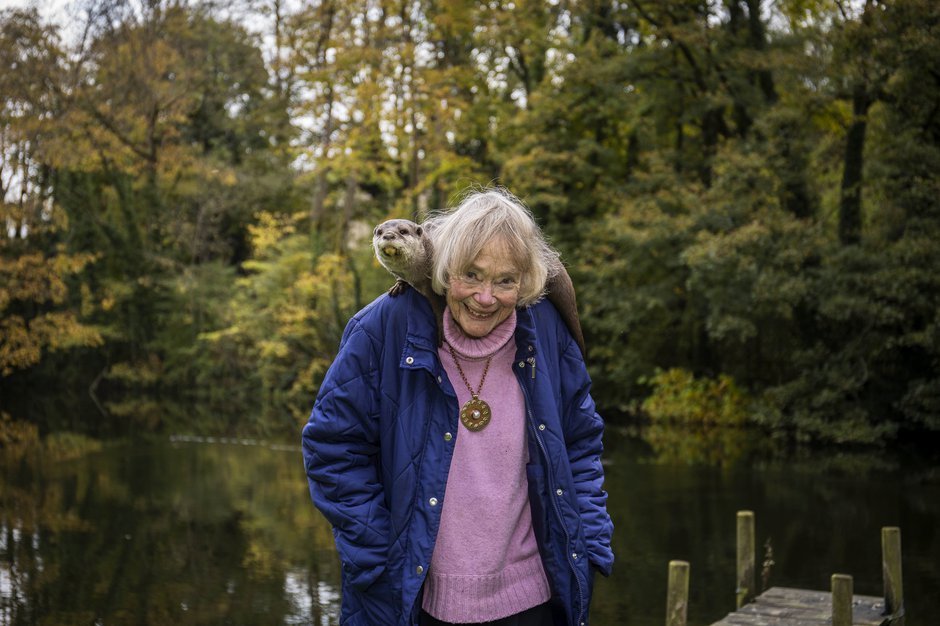 Image by: Jake McPherson
Image by: Jake McPherson
Ms Neville raised previous otters with her late husband Martin and three daughters, who have all now left home.
She also campaigned hard alongside big names such as the legendary Sir David Attenborough in years gone by to urge water companies to clean the country's rivers.
They had become so polluted with the chemical polychlorinated biphenyl (PCB) that the wild otter was almost extinct.
Incredibly, Ms Neville's actions prompted Michael Meacher, then environment minister under Tony Blair, to announce plans to phase out PCBs in 2000.
She said: "We didn't know anything about otters - we were just a normal family. But then we wanted to raise awareness about their future.
"We fought so hard for their safety. Clean water is pivotal for the future of otters and all living creatures. Since then [1980], the rivers have visibly improved."
Ms Neville is now supporting Animal Alerts, a small device which attaches to the front of cars and emits an ultrasonic sound.
This warns creatures like rabbits, dogs and otters not to cross the road as the car is approaching - potentially saving huge numbers.
She said: "It keeps them on the verge. Otters like to cross the road at night when they think it's safe."
When he's not on Ms Neville's shoulders, 'Rudi', an Asian small-clawed otter, lives in a large cage in the garden - where other otters can come and say 'hello'.
He performs in country shows, fêtes and children’s parties - including at Kensington Palace.
The pair have even appeared on the hit Channel 4 TV show 'Come Dine With Me', coming in second.
Ms Neville also keeps rescued swans, ducks and a goose on her lake.
Millionaire's son reveals he has been sleeping rough for over 20 years - since he was 15
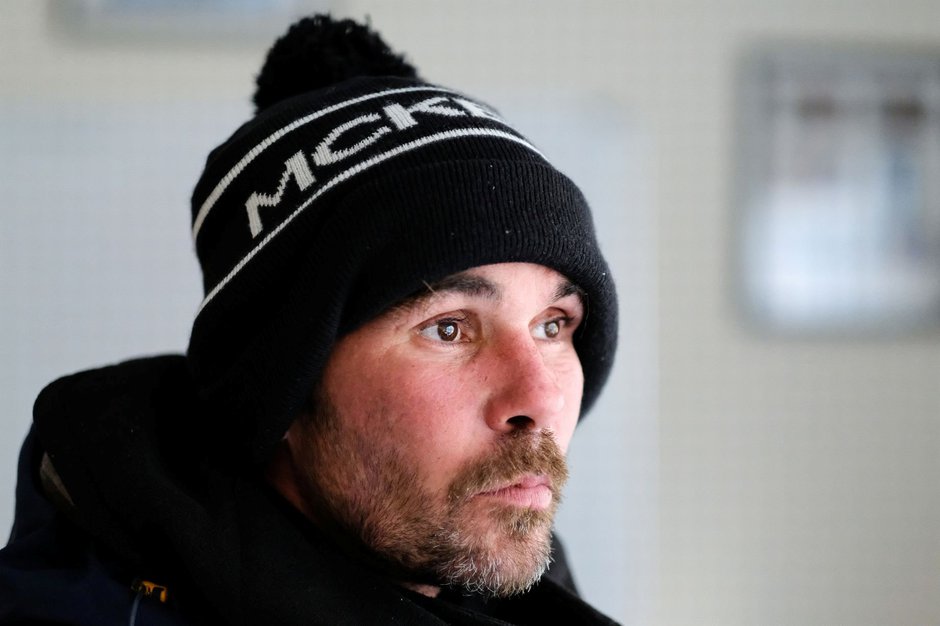 Image by: TM Cornwall Live
Image by: TM Cornwall Live
A millionaire's son has revealed that he has been sleeping rough for over 20 years - since he was 15.
Privately-educated Ryan Staffiere, 37, has spent most of his life living in car parks and public spaces despite his privileged upbringing and being given all the opportunity in the world.
He dabbled with drugs at the age of 11 and his life went downhill from there, to the point where his affluent parents had no choice but to kick him out at 15-years-old.
Since then, Ryan has been living rough in Truro, Cornwall, and is now facing another Christmas on the streets.
He said: "My parents were millionaires. My family owned holiday cottages and I went to a private school. I’m a good boy gone wrong.
“I was kicked out when I was 15. I’m not thick, I just love the party scene. Now I’ve been on the streets, on and off, for about 21 years."
Ryan is a familiar face at a local homeless charity's resource centre, and is a favourite with the staff at St Petrocs Society.
They describe him as polite, kind, well spoken and clearly highly educated, taking the time to say thank you to every kind gesture.
But he admits that he’s no angel, with 93 convictions on his record and earlier this year he hit the headlines after demanding that police gave him a taxi ride home.
He says it’s been all down to drink and drugs.
Ryan added: “I was mixing with people that were using. It became a serious problem in my 20s, more than the drink was.
“I had a few girlfriends and lived with them but I was still on the drink and drugs. They were toxic relationships.
“I was a heroin addict when I was 20. When I was 25 the crack cocaine came down here. I got into it and then it’s just been a downward spiral ever since.”
Ryan often sleeps in a car park in Truro, in an effort to stay away from the weather.
He added: “I used to stay in car parks but I wouldn’t sleep. I just used to walk around at night; I was too scared to go to sleep.”
“You just get used to it. It’s no different to being a sparrow. They live outside every day. They don’t moan about not having central heating. Someone gives him a pasty and he’s chuffed.
“The worst thing is getting wet. You have to know where to go when it’s raining to keep yourself dry."
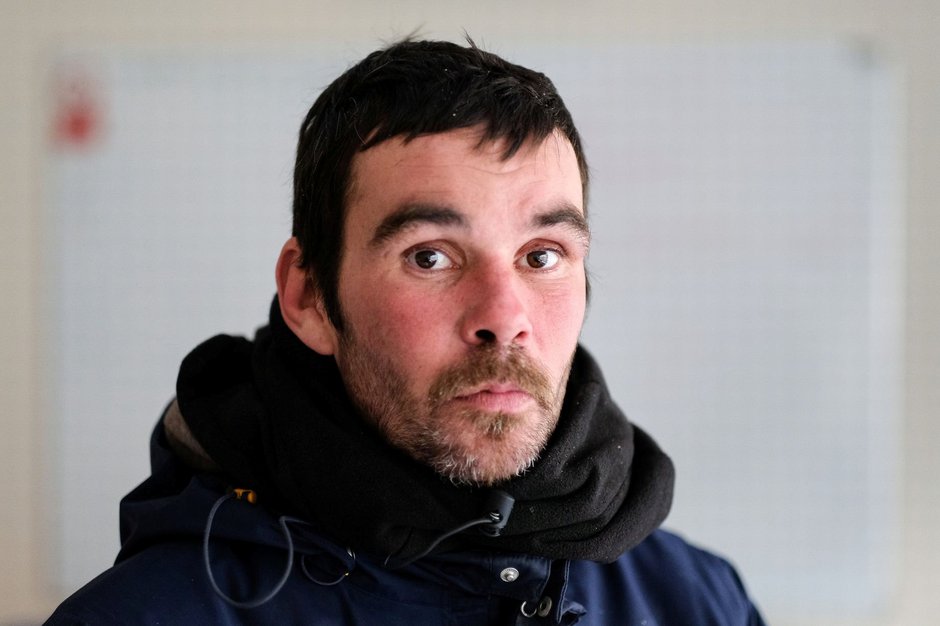 Image by: TM Cornwall Live
Image by: TM Cornwall Live
For most of us, the festive period is a time to celebrate and Ryan is no exception. I love it,” he says. “People are so kind.”
But the kindness from others has got him into trouble.
“Last Christmas I got banned from my mum’s house,” he says. “Someone had given me a bottle of tequila, a bottle of vodka and a bottle of brandy.
"I drank them all that day. My mum wouldn't let me in. I still see them. They don’t like my lifestyle but they have me round for a cup of tea and cook me a meal."
This year, Ryan has reached something of a turning point and next month he is due to start rehab. He hopes it will be third time lucky.
He added: “I will be in rehab and spending Christmas with the homeless. That’s what I want to do,” he says.
Ryan is currently living in a B&B and has enrolled on various courses, which have helped boost his confidence and given him a sense of purpose.
“Two years ago I was happy injecting heroin and smoking crack. I couldn’t get a f**k that I was on the streets, I couldn’t see a future for me,” he says.
“The course have given me something to do and opened my eyes. There’s more to life than just existing.
“I’m not sat on the streets begging, trying to get a tenner for crack.
“I go shopping every week. That’s something I haven't done before. I buy myself new clothes.”
“I’ve got courses lined up. I want to be an advocate for homeless people. I could take them to doctors appointments and things like that.
"I would volunteer at first but that’s what I want to do as a job.”
There’s one thing that motivates Ryan more than anything else, he has a 10-year-old little girl who he is not in contact with.
Her mother, Ryan's ex-partner, died from an overdose and his daughter currently lives with family members outside of Cornwall.
Thinking of their future, Ryan added: “I want to get a little flat and get a dog and learn to drive. I want to get a job.
“When she grows up she can say my dad didn’t do well when he was younger but he’s tried his best.”
RUFF RIDER - Meet the real Hairy Biker ...Rocket the motorcycle dog
 Image by: Chance McBride
Image by: Chance McBride
Rocket the dog loves nothing more than motorcycle cruising on the open road - perched on the shoulders of his owner.
The three-year-old Shiba Inu - named after a character from ‘Guardians Of The Galaxy’ - began riding with owner Chance McBride when he was just five months old.
He now rides on Chance's back in a special rucksack for carrying dogs, or rides pillion in a bespoke pet seat.
Chance, of Phoenix, Arizona, said: "I started training Rocket when he was 5 months old to ride the motorcycle.
"I put a towel on my gas tank and used a leash tied around my waist latching it to Rocket's harness.
"We would do small rides around the neighborhood. We did this on the weekends for a few weeks and he loved it so I bought him a 'Kuryakyn Pet Palace'.
"It's a great carrier that is meant for dogs and motorcycles."
Chance got Rocket after suffering a Traumatic Head Injury (TBI) three years ago.
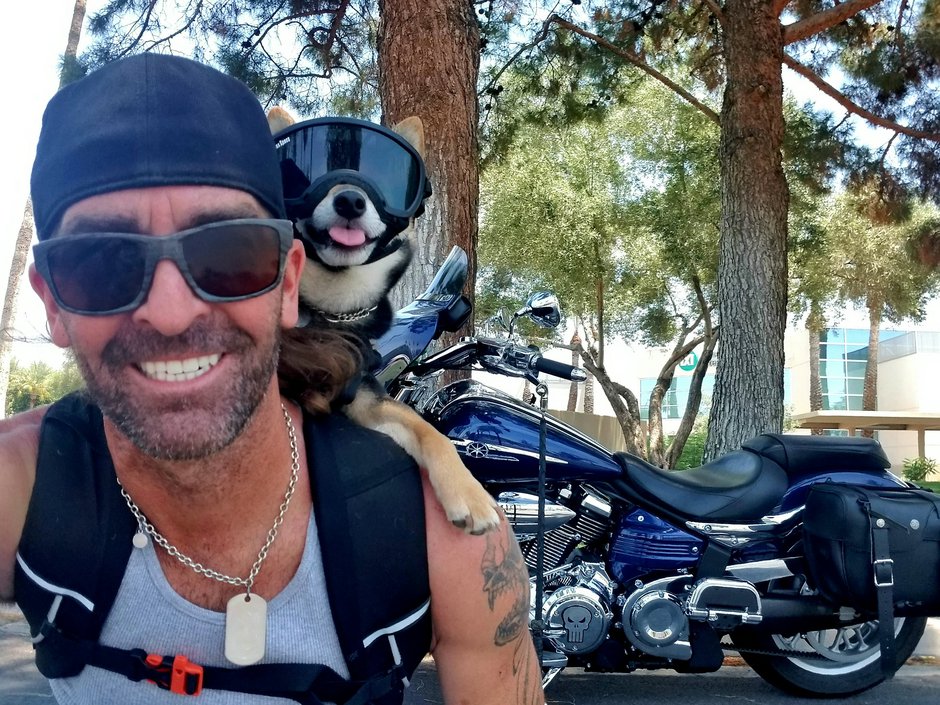 Image by: Chance McBride
Image by: Chance McBride Image by: Chance McBride
Image by: Chance McBride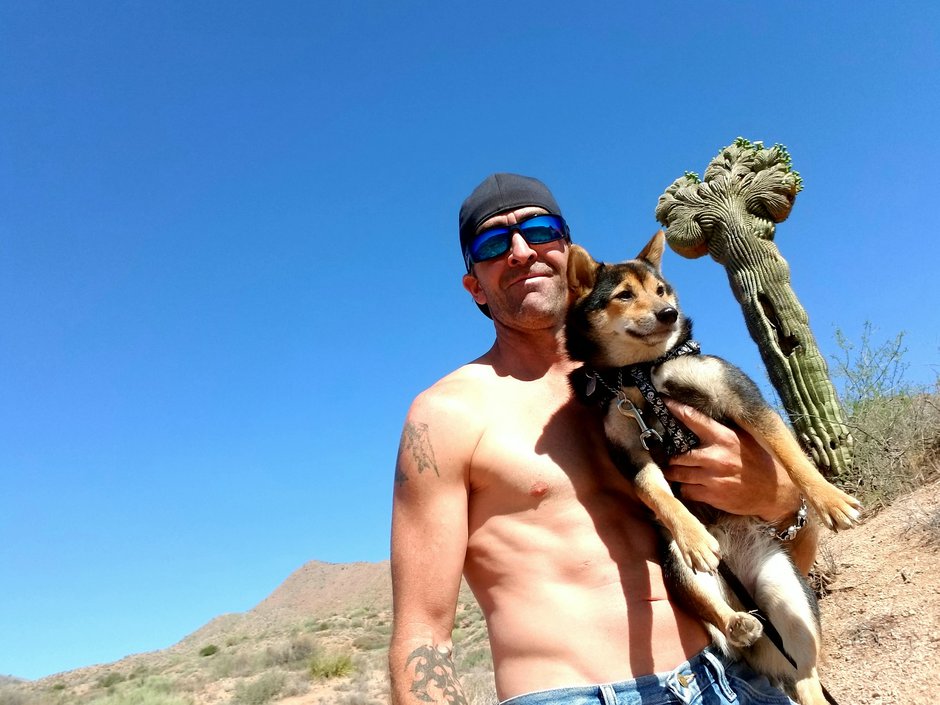 Image by: Chance McBride
Image by: Chance McBride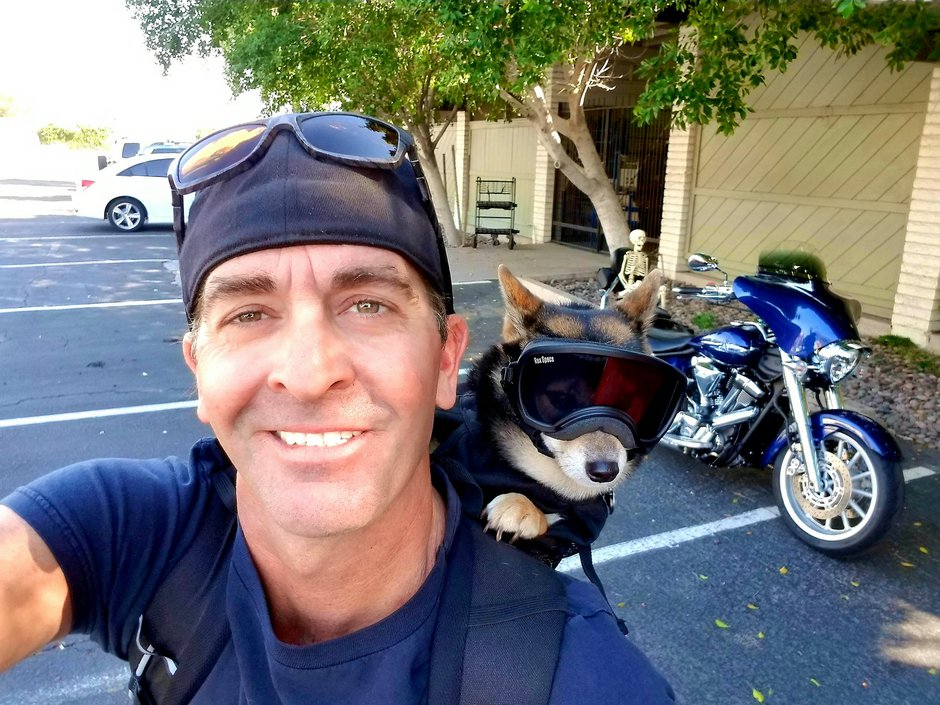 Image by: Chance McBride
Image by: Chance McBride
He explained: “I’m not good with people after my TBI so I would go on rides by myself a lot.
"My wife and I moved to Arizona from Colorado so all my friends and family were miles away while I was dealing with my TBI.
"Getting Rocket was a great emotional help, he and I are very close and he helps me with my TBI issues.
"I love spending time with him and riding motorcycles, so we ride pretty much everywhere together.
"I have met a lot of people at gas stations, stores, and even at red lights due to Rocket, he is a great ice breaker.
“I love to see rocket enjoying riding as much as I do. No matter how bad my day is he can make me smile.”
The pair have even completed a 2,600-mile ride from Arizona through New Mexico, Colorado and Utah which took two-and-a-half weeks.
Chance added: “I now have a K9 Sports sack for him so I can easily take him with me running errands or to just get out for a bit.
"My wife now can ride with us on the bike when I use the sport sack. And now a friend their family has moved to Arizona so we all get to go riding together.”
Video by: Gabriella Petty


